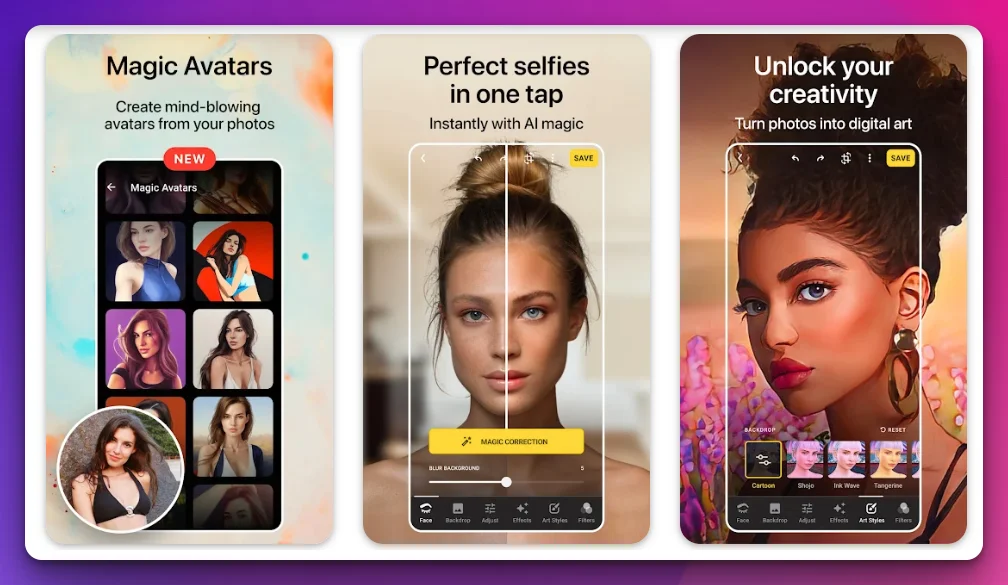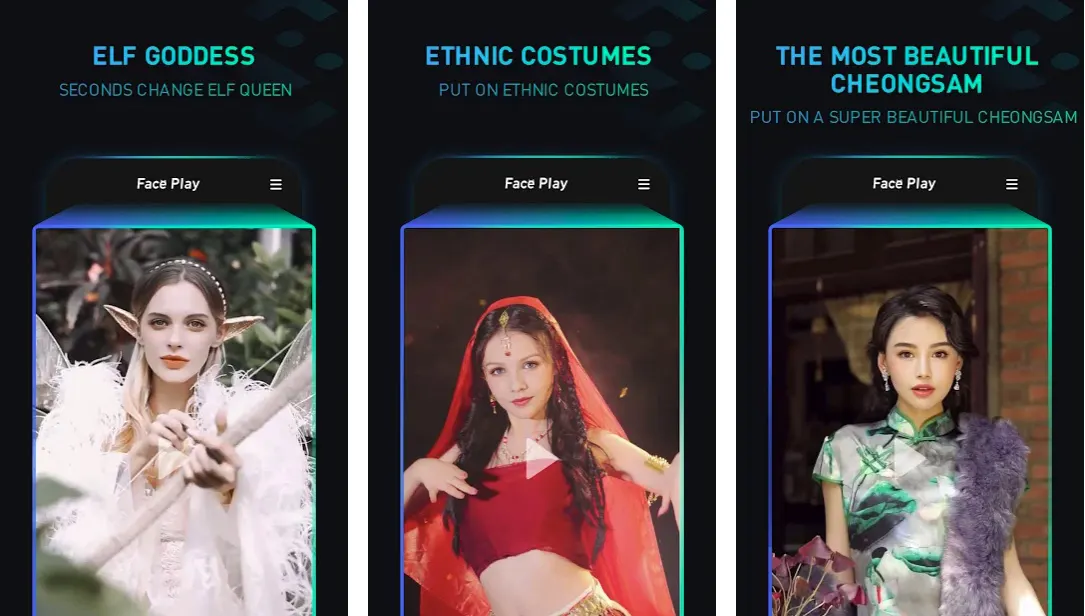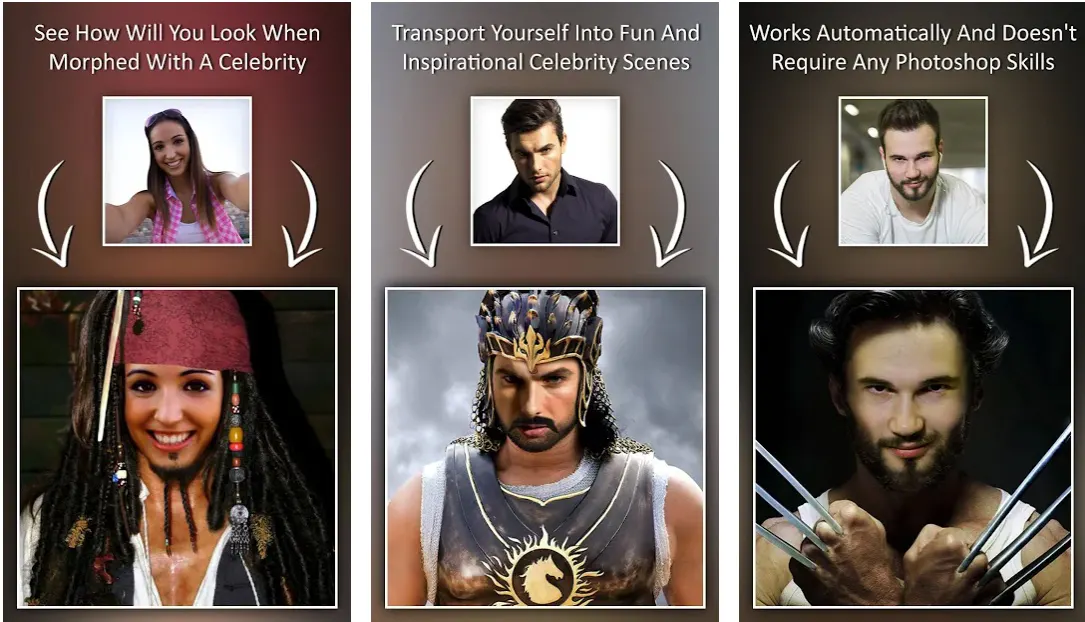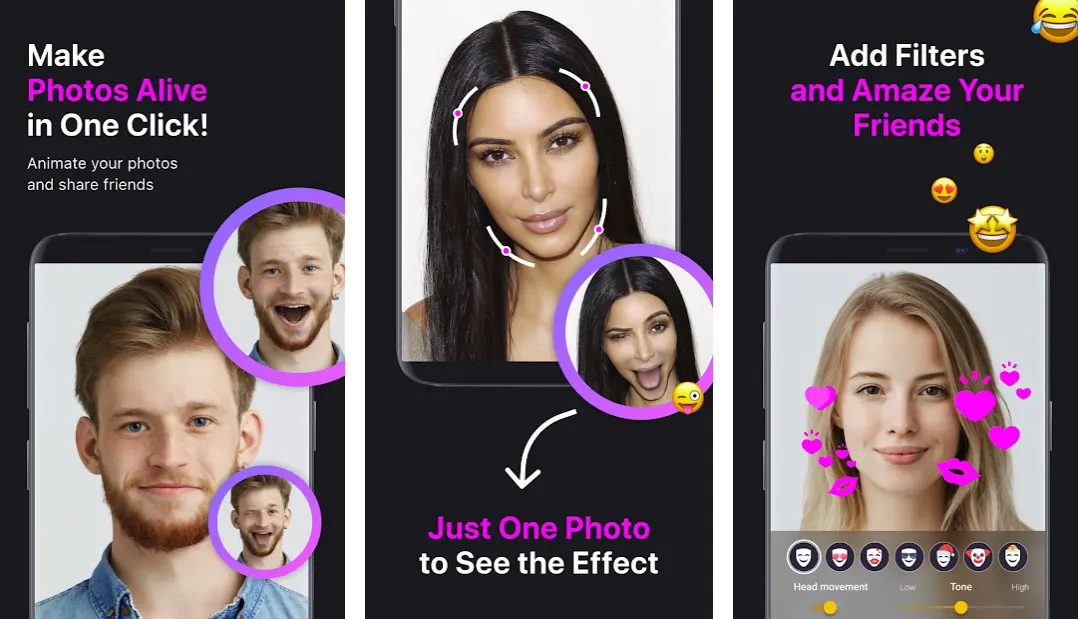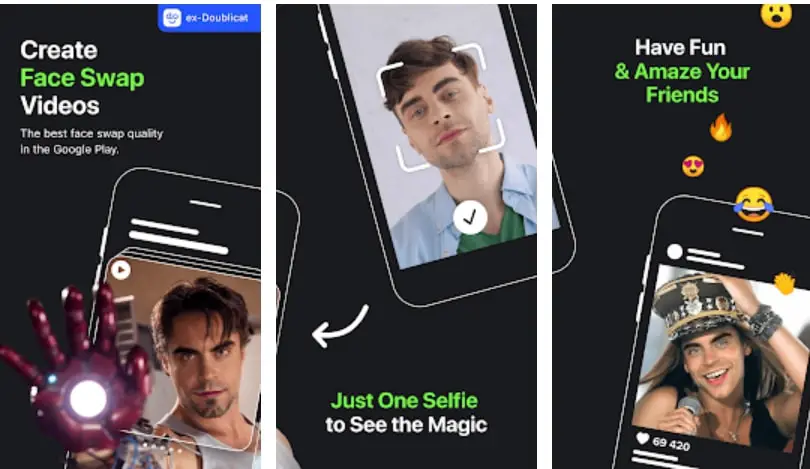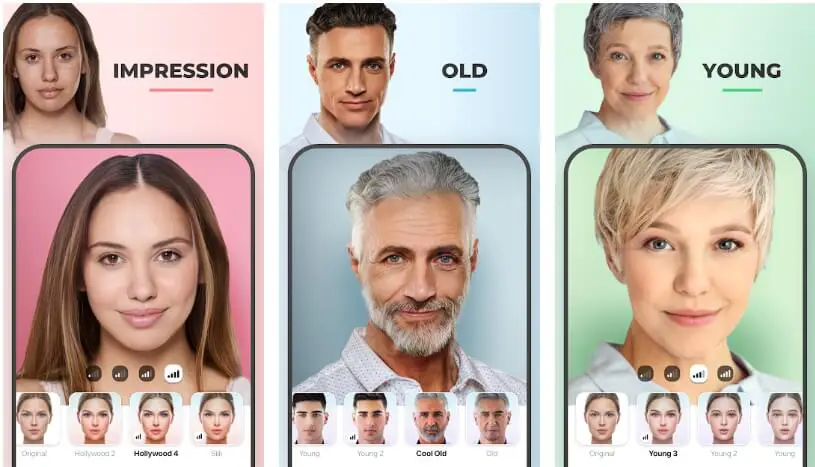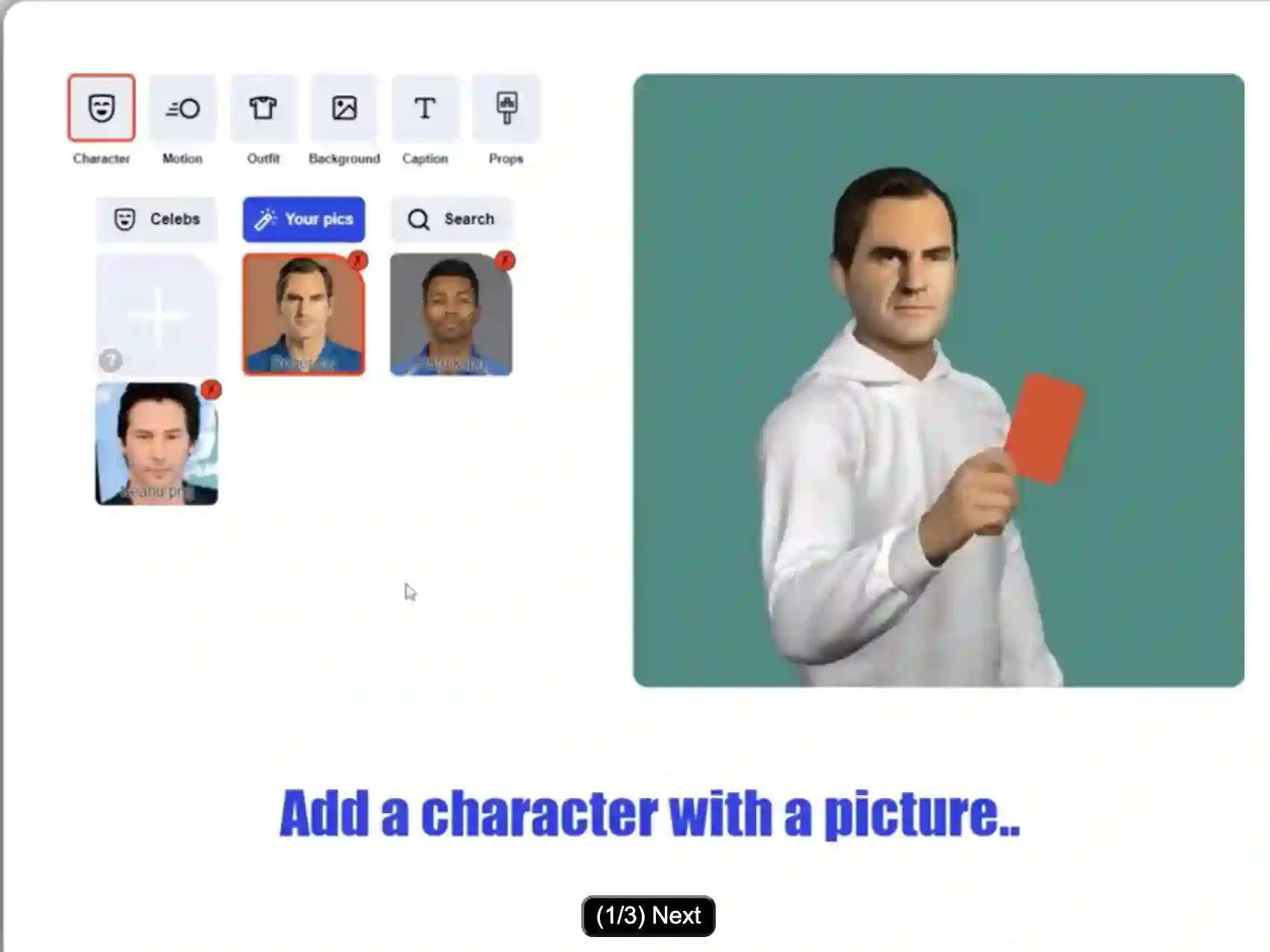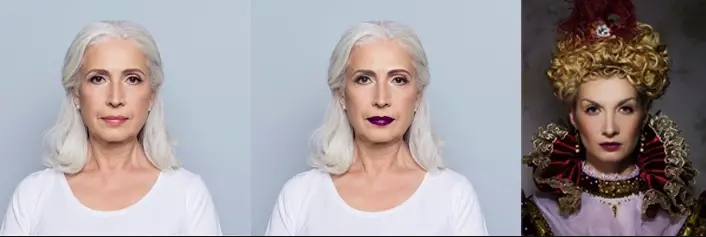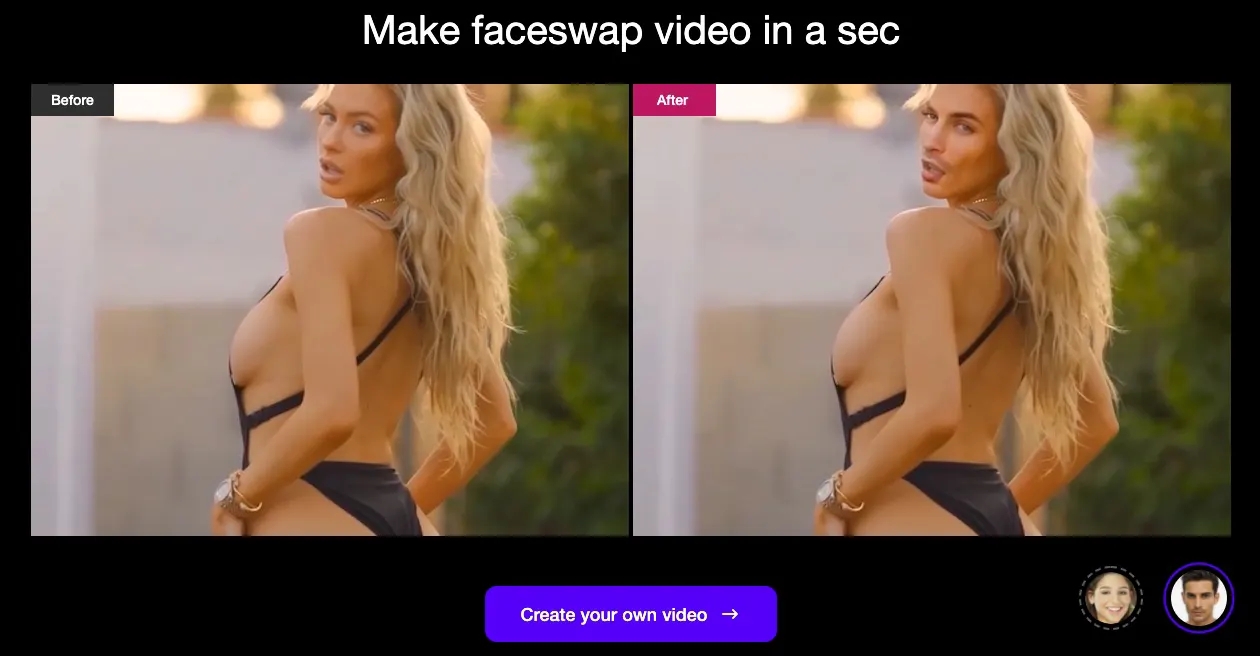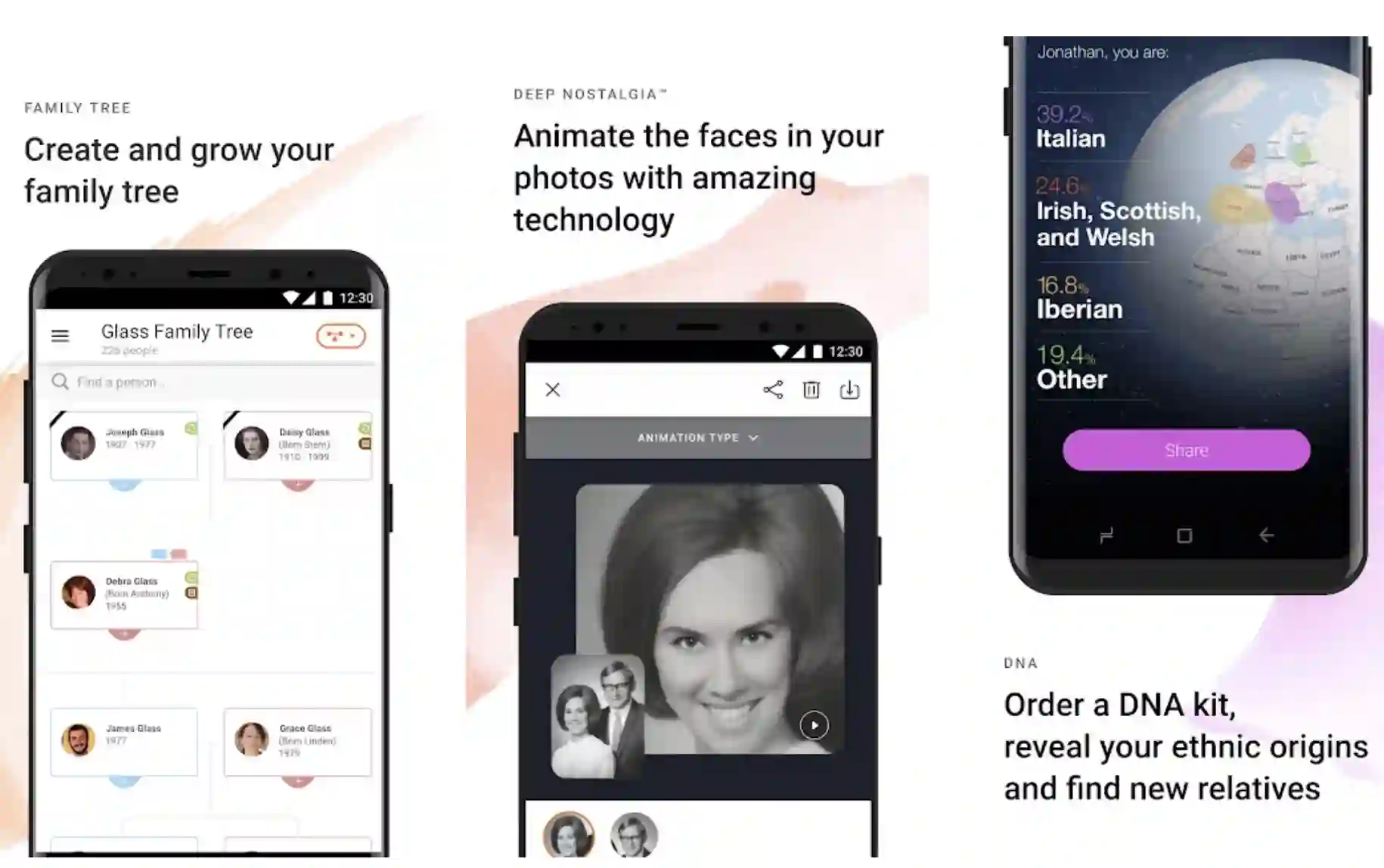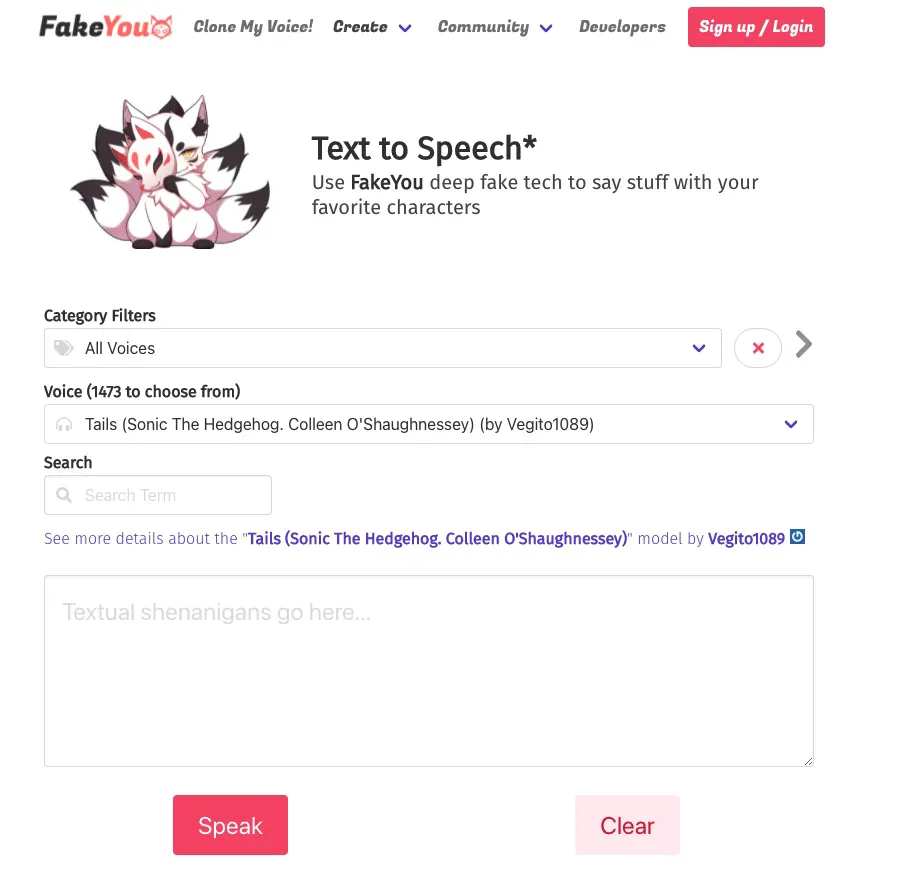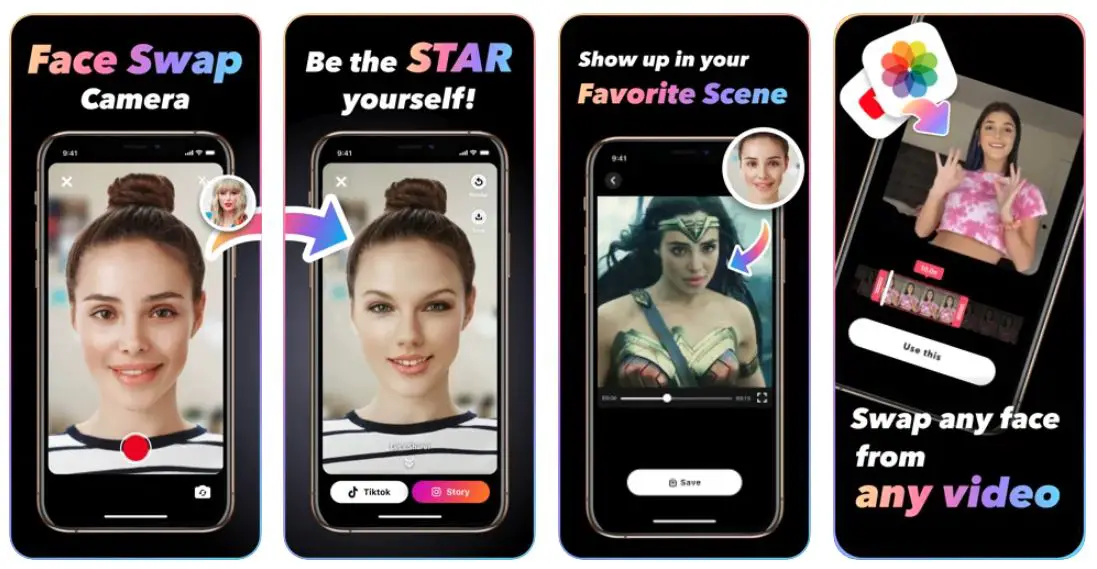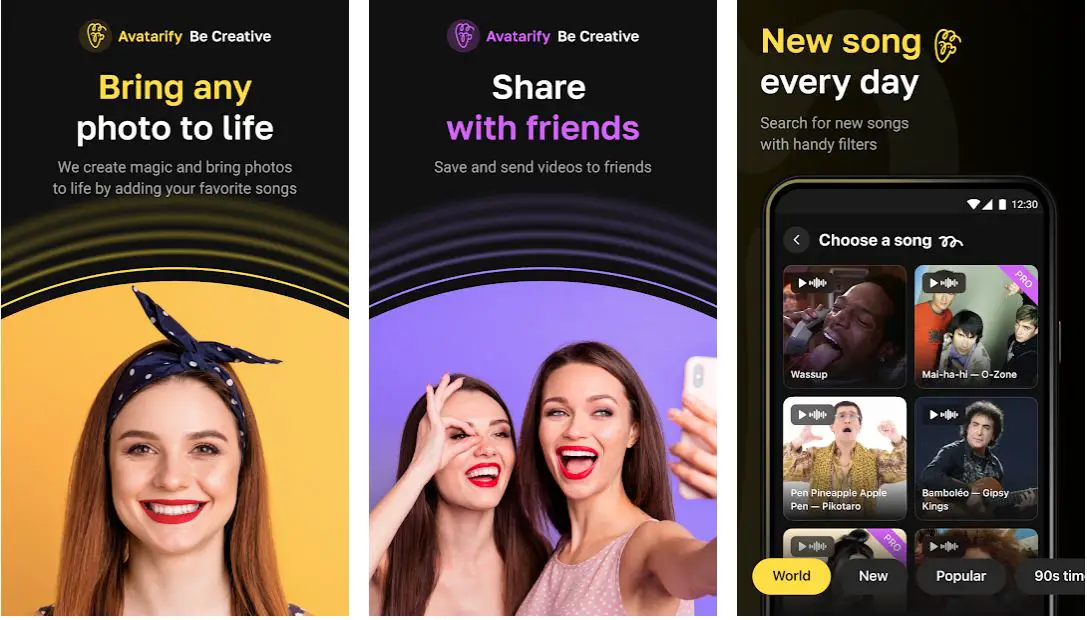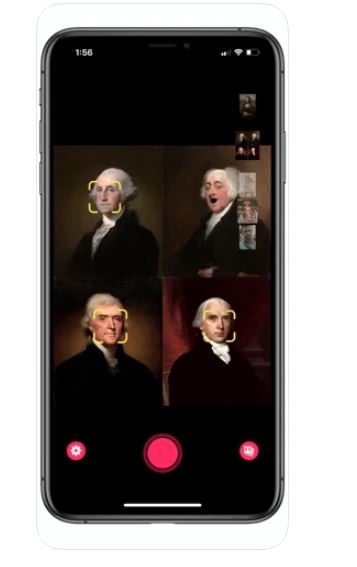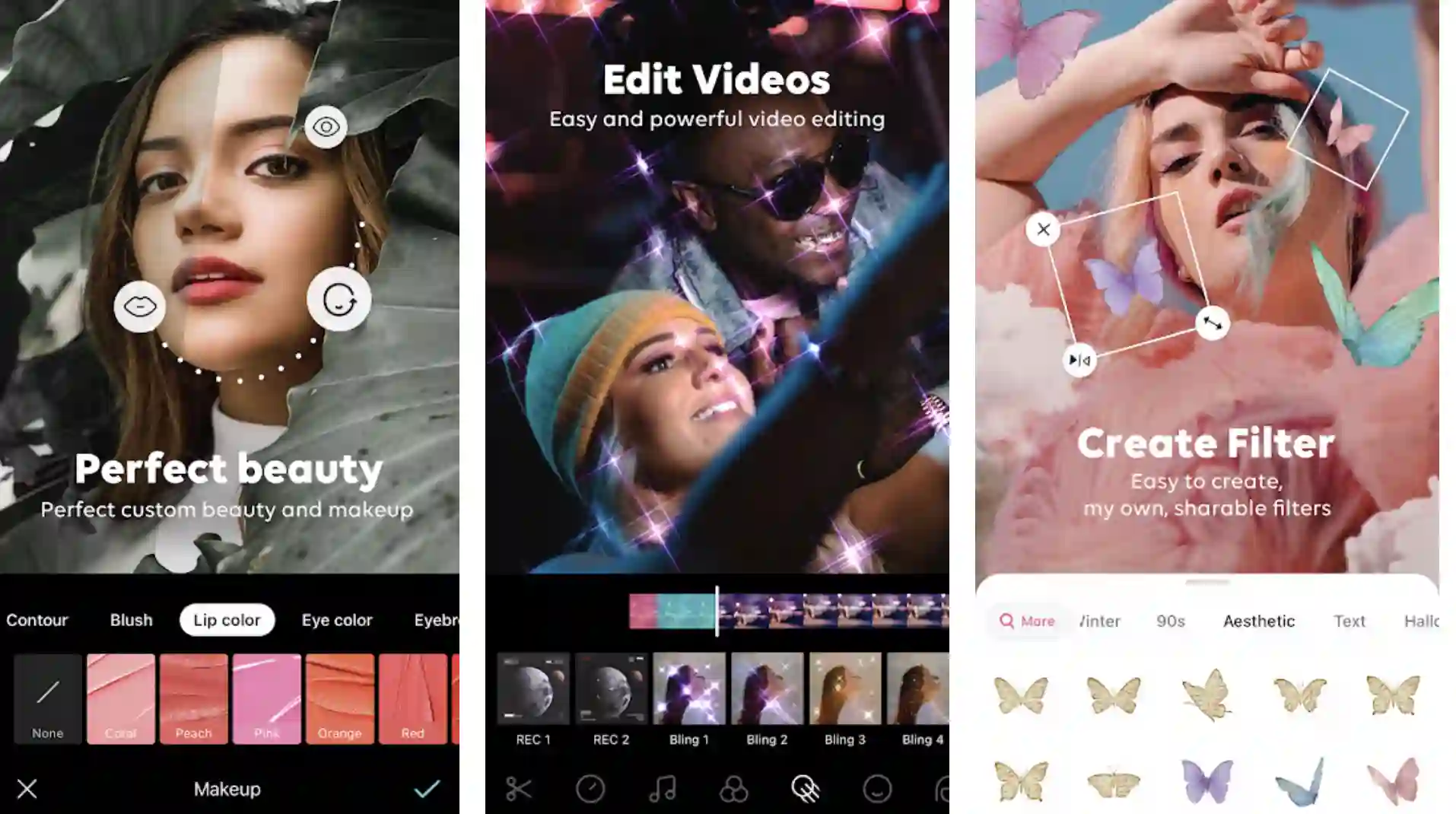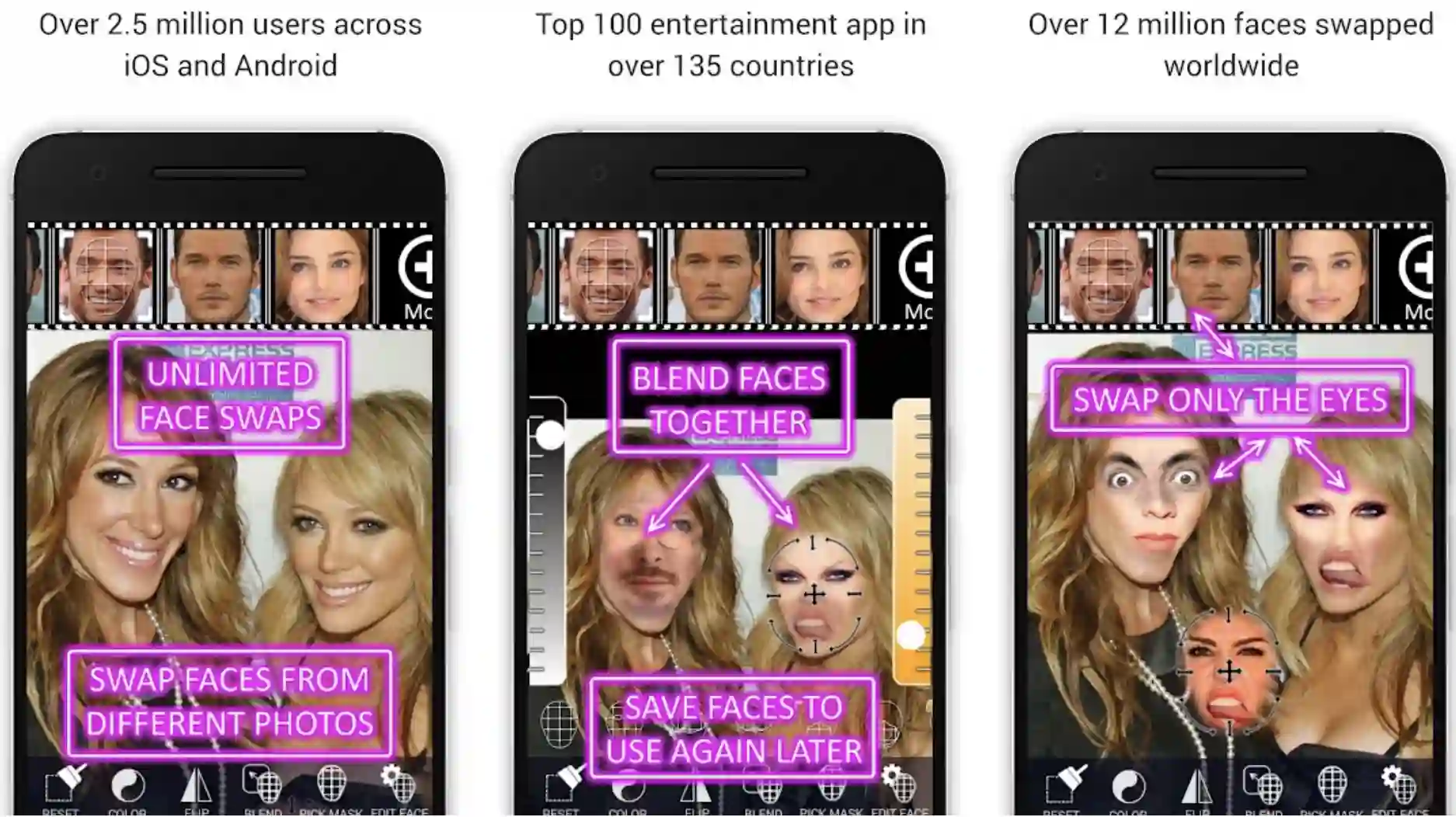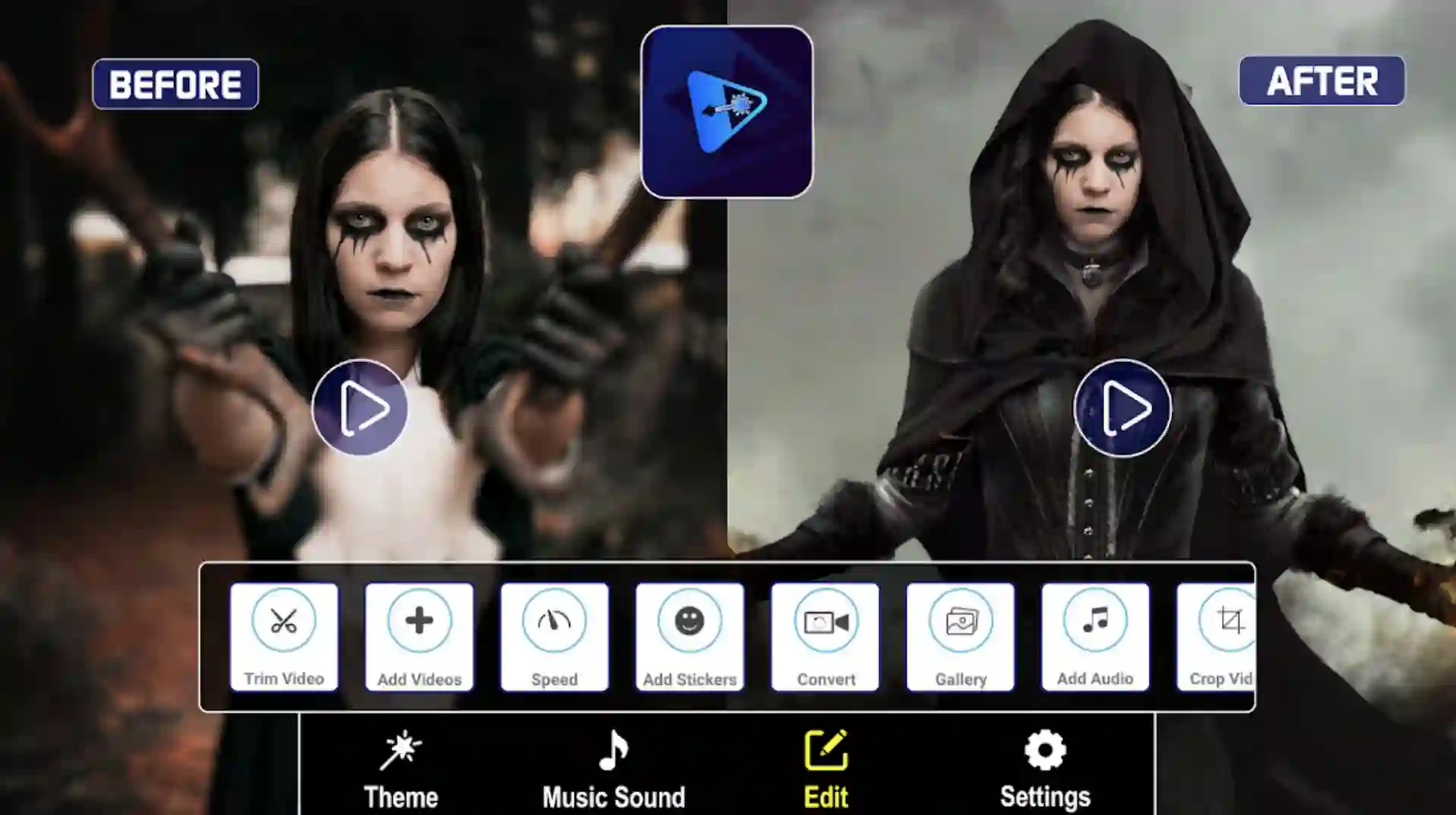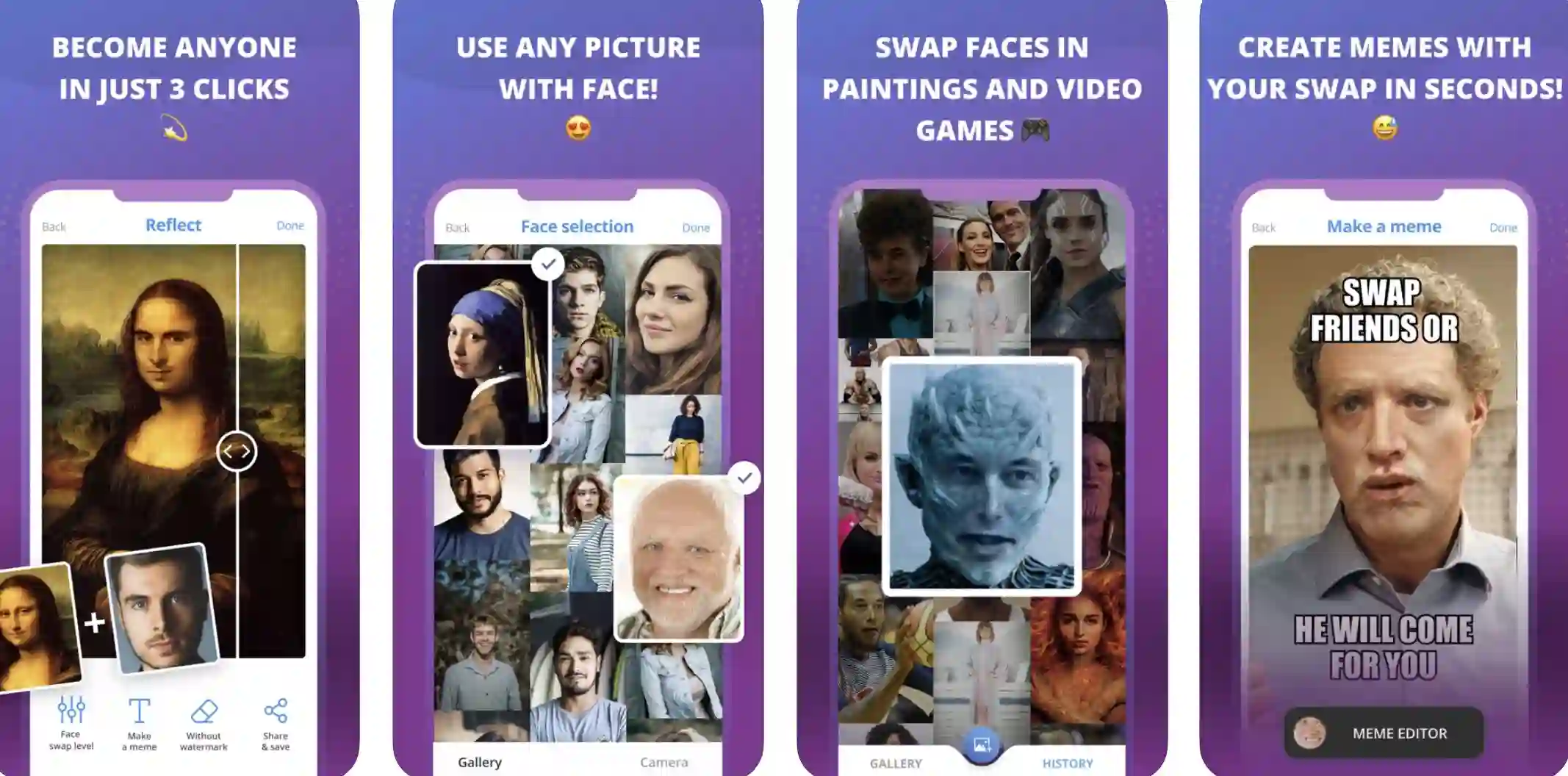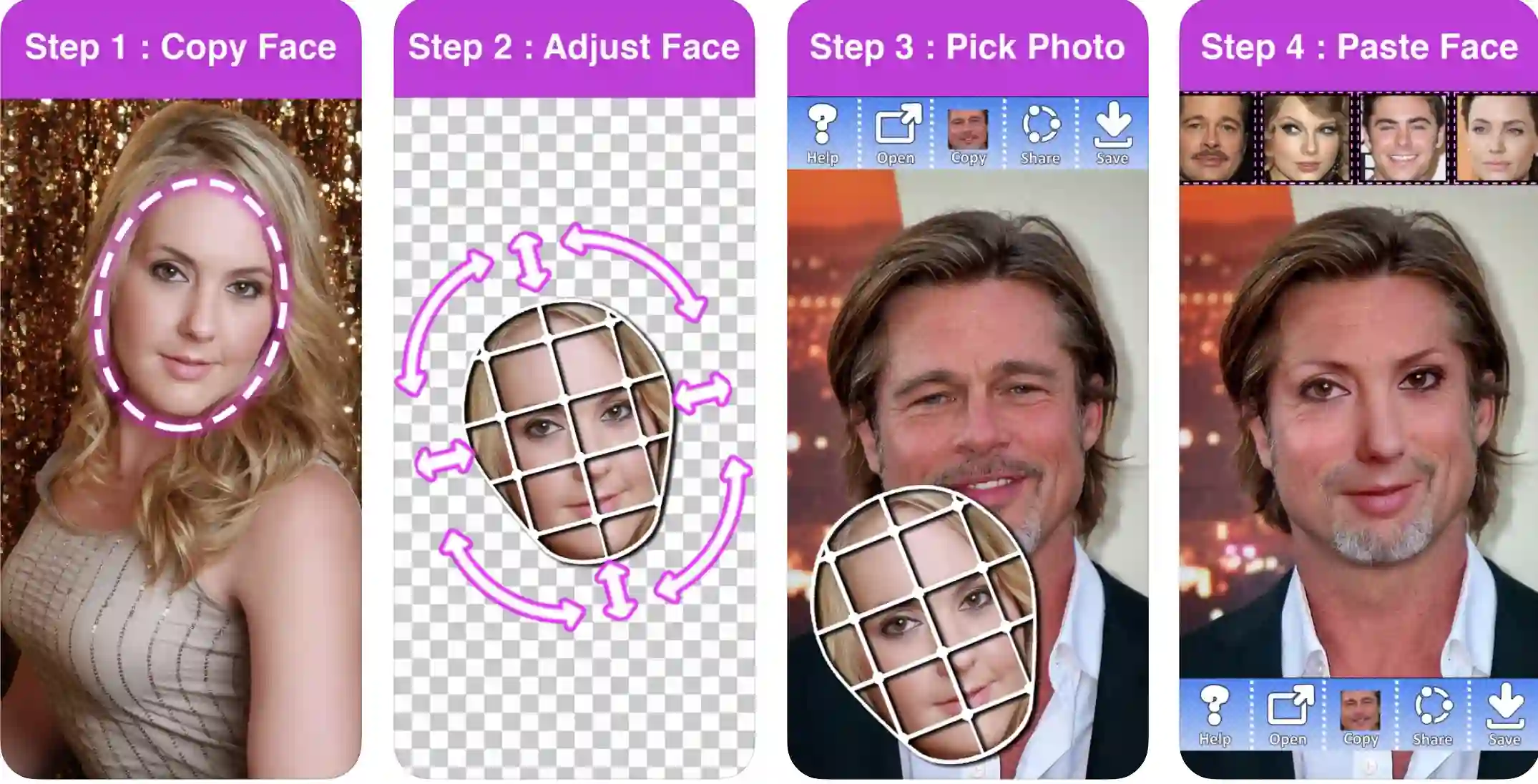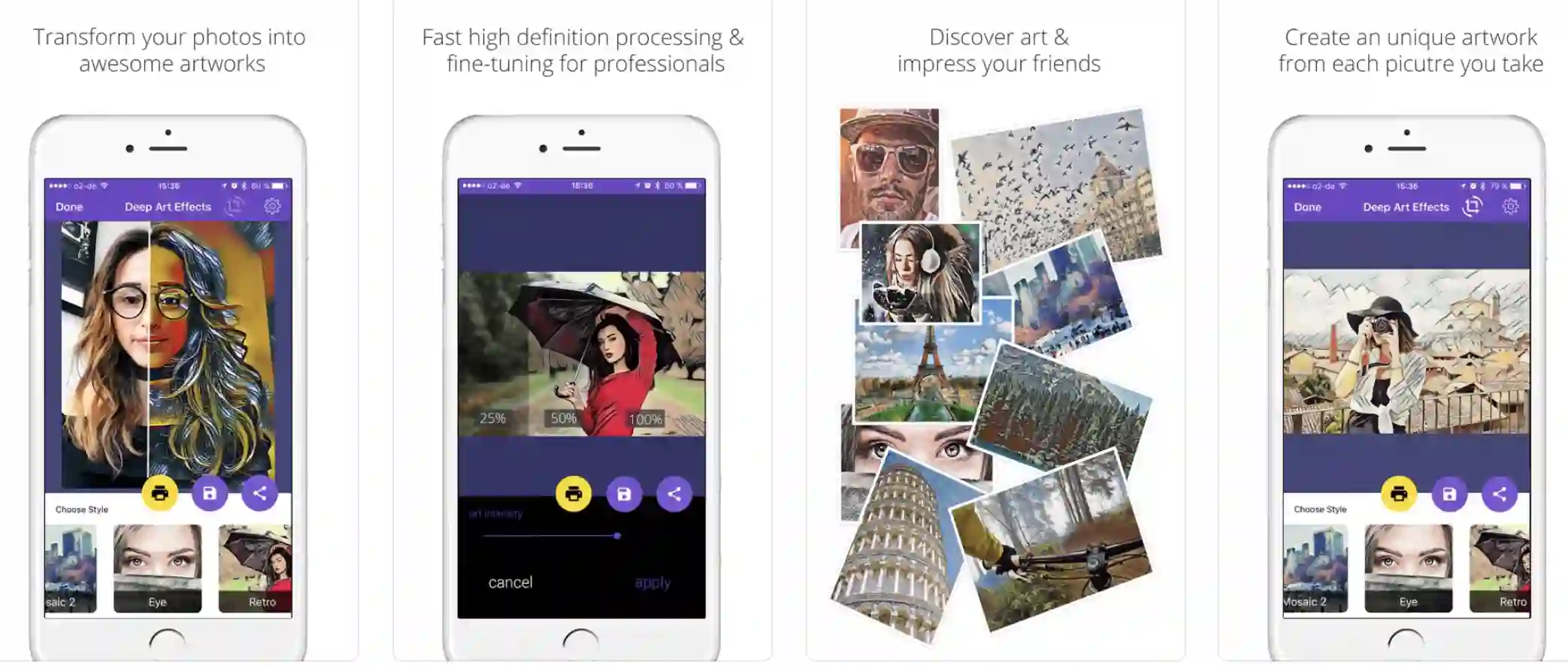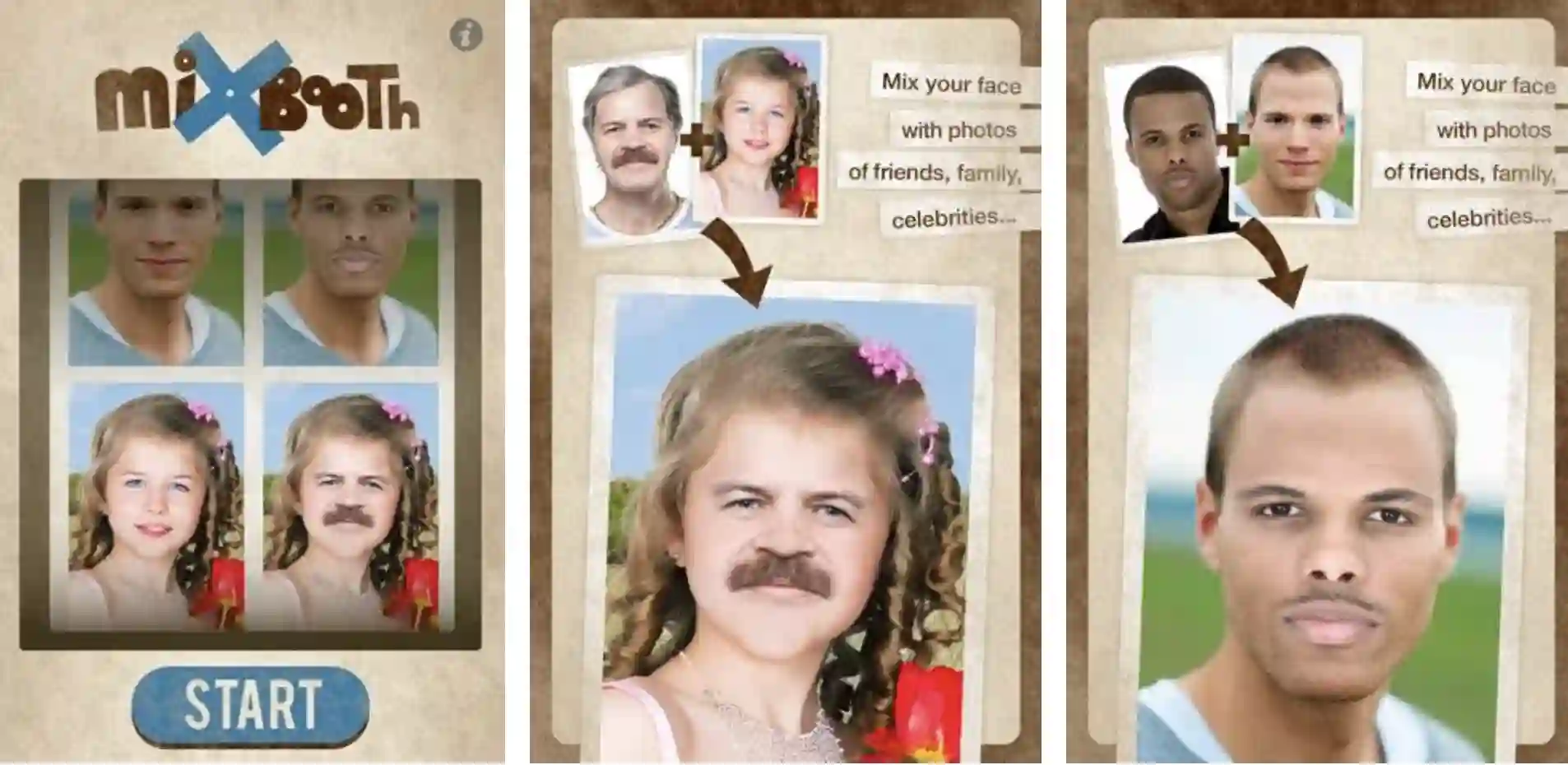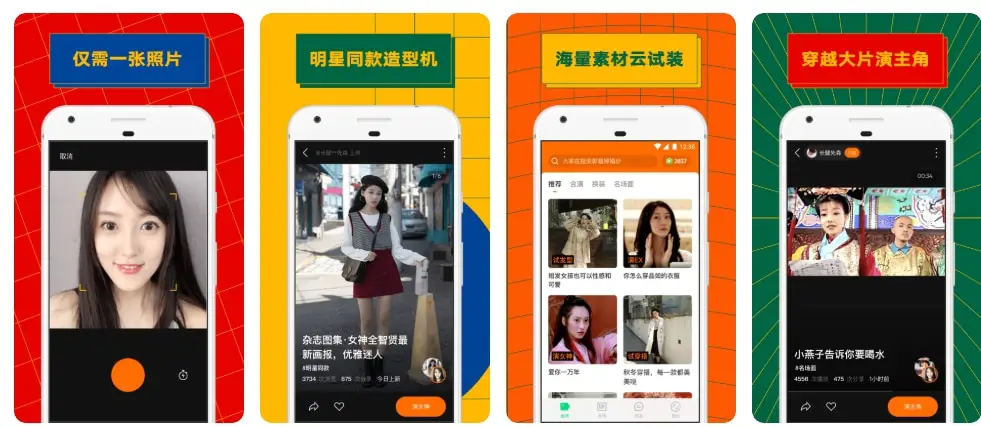Have you ever heard of deepfakes? These are manipulated videos or images created using artificial intelligence (AI) that can make someone appear to say or do something they never did.
Deepfakes have already been used to spread fake news, defame public figures, and even blackmail people. The rapid advancement of AI and the availability of deepfake software tools have made it easier than ever for anyone with a computer and an internet connection to create convincing fake media.
As deepfakes become more widespread and sophisticated, the risks of misinformation and deception are increasing.
It’s becoming harder to distinguish between what’s real and what’s fake online. The consequences of falling for a deepfake can be serious, ranging from reputational damage to political manipulation to financial fraud.
Moreover, detecting and debunking deepfakes requires specialized skills and resources that most people don’t have.
Fortunately, there are also positive applications of deepfakes, such as entertainment, education, and art. If you’re interested in creating your deepfakes for harmless purposes, you may be wondering whether there’s a deepfake app that you can use.
The answer is yes; several deepfake apps are available for download on various platforms. In this article, we’ll review some of the most popular deepfake apps and help you choose the right one for your needs.
Whether you want to make a funny video or impress your friends, we’ve got you covered.
Let’s dive in!
Understanding Deepfake Apps
Deepfake technology has revolutionized the world of digital content creation, enabling the synthesis of hyper-realistic media that blurs the line between reality and fabrication.
Deepfake apps have emerged as powerful tools, harnessing the potential of machine learning and artificial intelligence to seamlessly manipulate videos, images, and audio.
Deepfake apps employ generative adversarial networks (GANs), consisting of two neural networks, a generator, and a discriminator.
The generator generates synthetic content while the discriminator assesses its authenticity. The networks learn to refine and improve the generated results through a continuous feedback loop, eventually producing astonishingly convincing Deepfakes.
These apps offer many features and customization options, allowing users to alter faces, voices, and identities.
The user interface of these apps is designed to be user-friendly, providing intuitive controls and workflows for effortless manipulation of media.
However, the rise of Deepfake apps also raises concerns regarding privacy and security.
The ability to fabricate realistic media can be exploited for malicious purposes, such as identity theft or disinformation campaigns.
Therefore, responsible use of Deepfake apps is crucial, emphasizing the importance of consent and transparency in creating and sharing synthetic content.
As Deepfake technology advances, understanding these apps becomes vital in navigating the evolving digital landscape.
By grasping the underlying mechanisms, potential risks, and ethical considerations associated with Deepfake apps, users can harness their capabilities responsibly, avoiding unintended consequences and promoting the ethical use of this transformative technology.
Best DeepFake Apps or Websites To Get Ready To Be Amazed
Apart from everything around the internet with Deepfake videos and audio, there is much to learn about how it can be used for something positive.
1. Deepfakes web β
Deepfakes web β is a web-based software that uses a machine-learning algorithm to face-swap the subject with another. The process is pretty simple here to use the application.
Simply upload your video and make the changes as needed. Further, wait for the video to be recreated. However, it is not as easy as it does sound. The app takes about 4-5 hours to learn the video, and another hour makes the swapping.
Once your model is trained from one video, you can reuse it again for other projects. This will save you time and also give you the results much faster.
Deepfakes Web β is not a free site and requires a small amount to pay to use the service.
Here is the Faceswap web tutorial video that will show how it works.
2. Lensa AI
Have you ever wondered how some people could create convincing deepfake videos that seem almost real? Or maybe you’ve tried making a deepfake yourself, but the results were disappointing, and you felt overwhelmed by the technicalities involved.
It’s frustrating to miss out on the fun and creative possibilities of deepfake technology just because you lack the skills or the right tools.
After all, deepfakes can be a harmless way to make memes or a powerful tool for filmmakers and advertisers to convey a message or entertain an audience. Plus, deepfake apps are becoming more accessible and user-friendly, but not all deliver the same quality or features.
That’s why you should consider Lensa AI as the best deepfake app on the market. With Lensa AI, you can create high-quality deepfakes in minutes without needing any prior experience or complex software.
Lensa AI uses advanced machine learning algorithms and neural networks to analyze and synthesize facial expressions, voice, and gestures, ensuring a seamless and realistic result.
Moreover, Lensa AI offers various templates, filters, and editing tools that allow you to customize your deepfake to your liking and make it stand out.
Whether you want to make a funny video with your friends or a professional commercial, Lensa AI has got you covered.
Download the App From the Google Play Store
Download the App From the Apple App Store
3. FacePlay – Face Swap Videos
FacePlay – Face Swap Videos is another exciting deepfake technology app. The moment you open the application, you can notice that it comes with a wide range of video face-changing templates.
These short-changing templates can be designed with a single click.
It is simple to use, and your videos are ready instantly. They are quite similar to the special effects that you can see in most animated movie videos. You can do a wide range of special effects like mature your face or make it look younger.
The best part is that you can perform everything using a single click. So, for example, when you want to make a video about your entire family, you can choose a particular culture.
You can depict it in the video if you are from a particular nation and are proud of the food and culture. You can change the face using a single click. Their customer support is also good and friendly.
When you want to communicate with them about some features, you can choose the settings option and click on feedback.
So give this app a look today and see for yourself what is possible.
Download the App from Google Play Store
Download the App from Apple App Store
4. Celebrity Face Morph – Transform your face with AI
Celebrity Face Morph – Transform your face with AI, a powerful deepfake app. Moreover, it is easy to use. It comes with terrific image recognition technology that lets you change how you see things.
Besides, you do not need Photoshop experience as it works automatically. You can transform images, pictures, and stills into exciting ones and add some flavor to them. You can morph yourself along with your favorite celebrity.
You can take selfies with the camera. Then you can choose your favorite celebrity. It could be anybody. Then look at the image, sit back, and enjoy the pictures you are provided. It has several functions that provide you with enhanced cut-paste photos.
Your face can now blend effortlessly with celebrities of your choice. In addition, the deepfake app comes with some exciting features, including automatic face detection, blending faces with face expressions algorithm, and face morphing.
There is also the face swap, face averaging, face mixing, and face warp. You can choose any of your favorite celebrities, like movie stars, political personalities, and athletes. You can also post images of movies along with your face.
The best part about everything is that it comes for free. So, why not check it out and have some laughs?
Download the App from Google Play Store
5. Anyface: face animation
Anyface: face animation is another exciting app. Suppose you want to see yourself cheerful and happy; what better way than using this app? It instantly refreshes your appearance.
If you plan to edit and improve photos, you add filters to them. Then, you can easily enhance the images by providing a light mood to them. Then, you can mix them using the effects with the help of hats, stars, and glasses.
You can also improvise the pictures using the objects. Trust us; you won’t get bored doing these things. The face animation effects will make you laugh with your family, colleagues, or anybody.
You can laugh, smile, frown, and do much more using the face animator feature. The images and pictures do not have to be the way they are. You can edit, modify, and filter them. You can then place them on social media.
You can mix them using the feature. For example, you can make yourself talk, laugh, and do some crazy movements that can put a smile on your face. You can even animate your photos and images.
You can animate photos by making movements in the mouth and the eyes. You can design pictures of yourself that talk along with face animation capabilities. You can make them come to life with these features.
Besides you can also record your voice and then modify them on your animated face. Moreover, you can combine all these effects to create something different and unique. So why not give this amazing app a try today?
Download the App from Google Play Store
6. REFACE: face swap videos
Reface is a face swap video creation app for Android and iOS users. It is more inclined towards using it for fun purposes and not anything that can be in harm’s way.
Anyone can use it since it is free of cost. You can use this app to create hyper-realistic videos and Gifs by simply uploading your image.
Create new videos daily by swapping your face on celebrities or any GIF and sent to your friends for fun.
It has been loved by users everywhere and follows every privacy norm considering the use of the Deepfake concept.
This app is powered by Reface AI, known for its impeccable implementation of ML/AI technology for face swap and the algorithm that makes it possible.
7. FaceApp – AI Face Editor
FaceApp is powered by AI Face Editor, which uses the most advanced neural face editing technology.
This app can help you make gender swaps, hair styling, modification, creation, and other free & fun features.
Some of the app’s features are changing hair color & style, applying makeup, adding a smile, replacing the background with a single tap, trying old and young filters, adding tattoos, and many more activities.
The app has created a huge buzz with people all around the globe with its gender swap feature. It looks highly realistic and makes the switch very smooth without any errors.
8. AvengeThem
Are you a Marvel fan? If yes, then you are going to love this deepfake website. You can easily use the list of GIFs on the home page and swap your face with it.
Although the entire concept isn’t directly related to Deepfake but rather a static 3D model of your face.
The face app looks pretty cool and legit as well. Anyone can hardly make it if you are wearing a costume or it is photoshopped.
As of now, there are, in total 18 GIFs on the site of the most popular scenes from the Marvel Cinematic Universe.
You can choose your favorite character and make the swap. Simply choose the GIF, upload your image, and click on submit. That is it.
9. Adobe’s Project Morpheus
Adobe’s Project Morpheus is a project from the behemoth that can demonstrate the potential of blending deepfake methodologies. In addition, the app can help you to change your pictures and videos.
You can also add some virtual elements to them if you want. It does that with the help of Adobe Sensei AI.
This feature helps you to modify the expressions of your image or picture. For example, when you want to change a photo where you were not smiling, then you can do so.
The element in the photo and the video can be adjusted as you prefer. This app is an updated version of the Neural Filters. It was introduced in the market two years ago by Photoshop.
We were stunned by the results. They are almost lifelike. However, we also thought that the modifications could be done only in a minor way.
Additionally, the tool is only in its developing stages, and we can expect the company to make rapid progress quickly.
You can also put up somebody else’s face on another body. Adobe, a company specializing in strong effects on images & videos, was behind others in the market. It is nice to see that they have made an imprint in this segment.
10. Deep Swap
Deep Swap is one of the best deepfake websites in the market. It comes with several interesting features in it.
Today, everybody wants to modify their faces because it gives them immense fun.
While it can be fun and exciting, we may want to remind you about the features of the apps. For example, you can wonder how you would look like your favorite player, actor, or singer. Interesting.?
You can see that it is pretty simple & easy to work on. You are done within a few seconds. That is about it. You can design your deepfake videos using some methods. However, some users are concerned about the legality.
This is for the deep swap app and any deepfake app. There have been no legal issues until now. It is fine as long as your videos do not contain any explicit pictures or images. Besides, you are posting any strong political statements to the people.
Moreover, when using somebody else’s image or photo, ensure that the photo or picture is funny. You may want to take permission from the individual just to be safe. So why don’t you have fun with this app today?
11. Disney’s Deepfakes
Disney’s Deepfakes is a new technology that they have come up with. It will be able to give out high-resolution videos. Besides, the app also helps you to generate extremely realistic videos at 1024 x 1024 resolution.
However, there are some limitations before you can completely use them. According to Disney Research Studios, they have produced a new face-swapping technology.
It uses an AI algorithm that can modify your facial features with high resolution.
Also, Disney doesn’t want to leave behind a deepfake like that. Instead, they want to make a movie with characters based on them. According to them, the movie will be the first photo-realistic app to have used deepfake.
The model is based on the popular app, DeepFakeLab. It can provide you with 256 x 256 pixels in size. It could be a major trend in television and movie in general. We may see a new change in TV shows very shortly.
While the output provides you with top-notch images in exceptional resolution, you will want to know that the app does not have a demonstration product.
So why not check it out today? When you know that it is from Disney, then it should be unique.
12. Instagram DeepFake Bot
Instagram DeepFake Bot (Visit Here) is a product from Instagram. Unfortunately, the social media giant decided to jump into the fray of deepfake. We cannot blame them for doing that.
Instagram, as you know, is a social media tool that allows you to share photos and images.
It was only a matter of time before the tool maker decided to have a deepfake platform. Users can design deepfake using this social media tool. It is generated using the first-order model for image animation.
Besides, the faces are cropped using the ultra-light fast generic face detector. You can be assured about the quality of the pictures received from the tool. The tool could be helpful for those of you who regularly use Instagram.
It is quite simple and easy to use. But, of course, it would help if you loaded the picture and you are almost done. Besides, you can change them in any way you want to. But, yes, there can be ramifications of using images and videos incorrectly.
You may want to exercise caution when using somebody else’s image. We urge our readers to take note of that and read all the terms and conditions before using the app.
When you use something from Instagram, you know it ought to be good.
13. Wombo: Make your selfies sing
With the advent of new technologies, everyone is getting more creative with how they use their selfies. Now, you can take your singing selfies to the next level with a new app by Wombo.
With this Chinese deepfake app, you can create animated selfies that you can sing into — making fun videos that will have everyone laughing with delight and awe.
Wombo lets you turn your selfies into lip-sync videos. With only a few taps, you’ll create the funniest memes possible.
Thanks to artificial intelligence, Wombo will instantly generate videos — no editing work is required. You can choose from several preset voices and have fun with your friends!
Using Wombo is so easy you’ll do it every day. Wombo lets users create playlists by selecting a song, an image, or a video.
Once users have selected their content, the app constructs the playlist and instantly plays it.
Users can then share their playlists with friends, family members, or anyone who wants to see what they’re listening to.
Watch your photo’s mouth move as it sings, dances, or reacts to the music.
Download the App from Google Play Store
Download the App from Apple App Store
14. MyHeritage: Family tree & DNA
Your old photos may be a treasure trove of childhood memories, unending laughter, and family gatherings.
MyHeritage wants you to relive these moments with Deep Nostalgia, the first AI-driven feature on the market to animate faces in old pictures.
Powered by current facial recognition technologies, Deep Nostalgia lets you recreate your past with photo animations that bring back forgotten smiles and bring forward new ones.
Family trees can be used to trace a family’s lineage, history, and genealogy. MyHeritage is an all-in-one solution that offers you a way to create a family tree by simply inputting the names of your relatives.
The smart matching technology will automatically find other members who are related to them, and your family tree will start growing with potential relatives.
With MyHeritage’s photo editing app, you can transform your black-and-white photos into color pictures with a click and make them look colorful again.
The neural network and human curators help solve a few common image editing problems like faded colors, watermarks, and blurry faces — improving the quality of your family photos.
Download the App from Google Play Store
Download the App from Apple App Store
15. FaceMagic: Face swap reface videos
FaceMagic is an app that lets you have fun putting yourself in other people’s shoes. Whether it’s a celebrity, your BFF, or someone you just met, FaceMagic can put you anywhere.
All you need is a photo of yourself and the face you want to swap with — after a few simple steps, your new look is ready.
Facemagic is a powerful and fun photo editing app. Face swap is only the beginning of its capabilities: you can make selfies jump out of their frames, insert a friend’s face into a celebrity’s headshot, or morph your friend’s visage between two states.
Facemagic ‘s Swap button lets you immediately morph into your opposite gender-swapping genders, changing ages, and altering your appearance are now as easy as using the Swap button.
All you need is a selfie-and Facemagic. You can then swap your face with anyone else’s, male or female, adult or child.
Download the App from Google Play Store
Download the App from Apple App Store
16. Fake You – Deepfake Text To Speech
Fake You is one of the most interesting deepfake software app websites you would have encountered. That is because it allows you to make fake calls and messages.
If you want to escape a situation, you can use this app and receive a fake call or message. Hence the name. If you don’t want to give your smartphone to somebody, you can trick them into showing a low battery range.
Likewise, when somebody repeatedly borrows your smartphone to make calls, you can show them a low-balance message. Again, it is quite simple to use. First, you must add the fake call log to your original call log.
Then use a fake entry and a number, and fill in the date and the time you want to receive the call. Then choose a screen for the incoming call.
You can be certain that you will receive the call at the stipulated time.
17. iface: AI Face Swap app
iface: AI Face Swap app is another exciting deepfake all. It is very quick, helpful, and also fun to use. You can design videos in a quick time.
A notable feature of the app is the swap cam. Using it, you can swap your face with popular people and create your own swapped footage.
You can put your face on movie clips and have fun with friends using their faces. Before doing that, you may want to take their approval. You can also customize the videos from social media tools like YouTube.
You can then create and upload the videos on social media sites like Snapchat, TikTok, Twitter, and Instagram. You can edit the title, description, tags, categories, and privacy settings.
There is plenty of stickers that you can use on WhatsApp and other tools.
Now coming to the only flaw of the app, it is a paid one. You have several subscription plans that you can make use of. They charge you $7.99/month for the Pro package. You also have a one-week subscription for $28.99/year for the Pro package.
There is a 1-year subscription for $59.99 for the Pro package.
Download the App from Apple App Store
18. Avatarify: AI Face Animator
Avatarify: AI Face Animator is a hotshot tool in the deepfake world. You become who you want to be with the help of this animator app.
You can become your boss, a celebrity, a sportsperson, or anybody you want.
You can upload the photo and then make a small video about it. You can use the tool’s features and enhance your creativity. This is the ideal opportunity to improvise on your photo and video designing skills.
Some of the applications would be to make your baby say their first words. You can also upload the best photo that you have of yourself. You can choose your favorite characters from games, comics, and movies.
It is secure to use, the app has some bugs, but they get fixed often. Moreover, the designers provide you with constant updates.
It is completely free to use. Unfortunately, we felt that the privacy aspect of the app needs some improvement.
Download the App from Google Play Store
Download the App from Apple App Store
19. Talkr Live
Talkr Live is another app we couldn’t resist placing on this list. You can record videos of yourself as anybody you want to.
Once you are done recording, save it and share it on your favorite social media site.
Then save the video or share it on iMessage, Facebook, Instagram, Twitter, TikTok, or other social media sites. It has advanced 3D algorithms that can flawlessly detect facial movements.
They are then designed on the photo or image of your choice. Besides, you can also switch between several faces in a single photo. Isn’t that amazing? You can also choose the photos of your choice.
While most of the features are free on the app, you can generate pictures & videos coming with high resolution. You can also add eyeball and eyelid movements. Besides, other bugs have been fixed.
Download the App from Apple App Store
20. B612 -Free Selfie Camera, Photo Editor & Video App
The B612 photo editor remains one of the most widely used editing apps in 2021. With its simple user interface and many functions, it continues to attract users from all over the world.
The app is designed for iOS and Android devices, so you won’t have a problem accessing it anywhere you go.
B612 is an app that lets users experience the fun of combining multiple photos into one — a photo editor with unlimited possibilities.
With dozens of tools and features, users have unlimited possibilities to create unique images.
The app is available across all mobile platforms for free. Users can also access filters and other online editing tools to create memes on the go or to improve their digital footprint by making it look better on social media sites.
Download the App from Google Play Store
Download the App from Apple App Store
21. Face Swap Booth
When Face Swap Booth finds your face, it replaces the image with a comical face swap. This simple process lets you add funny faces to selfies, turning your boring office pic into an extraordinary one or integrating somebody else’s face into a family photo.
Face Swap Live lets you switch faces in real-time — swap your best friend’s face with a celebrity or change your facial expression to match something entirely different.
With an intuitive interface and advanced editing tools, you can edit photos without a computer. Your photos stay wherever you put them (not in some cloud), so everything is easily accessible from one location.
Face swap is a must-have app powered by a sophisticated face detector and lets you swap faces in photos with celebrities!
Every photo you take is automatically scanned, and the app chooses the best celebrity face to swap with yours. You can also add your celebrity faces and swap them – endless options!
Download the App from Google Play Store
Download the App from Apple App Store
22. SpeakPic – Deepfake
With their ability to speak and recognize words, photos can now transcend the boundaries of dimensions.
SpeakPic brings your pictures to life by allowing them to recreate human speech and features a wide range of trendy fonts and customization options that bring the app’s features to the next level.
SpeakPic lets users create their giggle-inducing deep fakes using its in-app translator.
With dozens of narrator voices, you can pick different effects and even add special effects like a low voice for an episode of a bodybuilding show or a comedic American accent for reenacting all of your favorite movie scenes.
The app’s translator includes multiple languages so you can find a voice in your language and different genders.
Download the App from Google Play Store
23. DeepFaceLab
DeepFaceLab is a powerful tool for creating deep fakes. It utilizes novel neural network models for face replacement and has become the go-to tool for anyone looking to create believable fake videos.
Its easy set-up process, detailed development documentation, and free on-demand cloud computing allow anyone to experiment with deep fakes.
Over 95 percent of deep fakes — highly realistic videos indistinguishable from real — are created with DeepFaceLab.
It is used by several popular YouTube channels, including CtrlShiftFace, iFake, and Shamook, to create convincing deep fakes for their audiences.
DeepFaceLab is a versatile face recognition tool allowing users to access model weights and source videos to create accurate face masks and custom models for future analysis.
Developed by Facebook’s research division, the DeepFaceLab tool was made available online free of charge in 2016.
The tool offers users a simple interface, explains how to use the software with clear instructions, and gives users a step-by-step guide on downloading their custom model.
Download the App from Apple App Store
24. Jiggy: Full Body Swap Videos & Reface GIFs
Jiggy is the best free deepfake app for pranking your friends with realistic digital stickers and videos. You can even use them as your profile picture or make fake videos of yourself.
Jiggy is a full-service solution for your photo animation needs. Aside from full-body swaps, you can also use its library of GIF stickers to add life to dull photos and videos.
With over 100 unique dances and face morphs, you can instantly add these goodies to your images, saving you the time and effort of manually editing them with Photoshop or GIMP.
Engaging with customers is easy as one, two, Jiggy! You can encourage users to share your creations across social media channels using advanced AI and a simple drag-and-drop interface.
Laughter is the best medicine for any brand — let Jiggy provide it at your convenience, so all you have to worry about is creating the funniest content on the internet.
Download the App from Google Play Store
Download the App from Apple App Store
25. Doublicat: Face swap videos and memes with your photo
Duplicate lets you meme your face. Choose from a library of pre-med faces and memes, or pick from one of the many readily browsable hashtag streams to make a quick meme you can share with your friends.
Poking fun at your favorite celebrities? Want to share a funny picture from work with your friends? Whatever you want to meme, you can meme it on Doublicat.
Seeing your face do what your dog already does, is powerfully entertaining. You can share the footage with your friends or your social media.
The app is still in its experimental phases, so if you’re a user, you must understand that it isn’t yet fully developed and may not work perfectly every time.
The developers have stated that the app only saves the face itself and deletes the image afterward.
Download the App from Google Play Store
26. Reflect
Reflect is the most widely used deepfake app. With its face-swapping AI capabilities, Reflect allows users to superimpose their faces on images with just a few taps.
Reflect is an incredibly versatile photo editing tool that can be used in many applications, from personalization to memes.
With Reflect, you can create your face photo art — from makeup transformation to face swap.
Use the app for fun at parties or as a useful tool for editing pictures before you share them online.
Your app is free to download and use, but you can subscribe for additional features: remove ads and unlock fantastic tools like the crop tool (limited to one per session) and stickers that help you perfect your Art.
Download the App from Apple App Store
27. Copy Replace Face Photo Editor
An excellent face-swapping app with distinctive features will delight all users looking for a creative application that allows them to swap faces and become stars.
Cope Replace Face Photo Editor is an easy-to-use and fun app with many great options to choose from — it’s a great solution for those who want to dress up and become famous Hollywood stars.
Cope Replace Face Photo Editor lets you beautify your celebrity photos using on-the-fly technology that lets you cut out your most-liked celebrity face from any photo and replace it with your own.
It’s super easy to use — open the app, choose a photo of a celeb, and tap on your face in the photo to replace their face.
Copy Replace Face Photo Editor lets you create a face photo that looks just like the person. This multifaceted application lets you create your style by adding features such as mouths, eyes, noses, etc.
You can replace your face with anyone’s, and the retouched photo will look like you. The program includes various wigs and filters to let users choose the one that best suits their mood or the image they want to portray.
In addition to its filters and masks, Copy Replace Face app features a publishing tool for both iOS devices. Once edited images are captured and uploaded with the app, users can share them on any social media account.
28. Deep Art Effects – AI Photo Filter & Art Filter
Deep Art has the potential to be one of the world’s first art apps, but it doesn’t yet have a large audience. It focuses on deep fakes of celebrities and is part of a growing movement to make these clips accessible to anyone on social media.
With a small but active user base, Deep Art is a project that can bring digital tech into the future of Art.
Deep Art is the world’s first app to use AI in generating artwork. The app takes inspiration from famous artists like Van Goh and Picasso and combines stylistic elements and unique images to generate one-of-a-kind artwork.
Each image is generated using an advanced algorithm after the user inputs their desired output — users can get started by choosing between different filters, adding effects, or adjusting the style of the final result.
Download the App from Google Play Store
Download the App from Apple App Store
29. MixBooth
Face swapping has been around since the days of the film industry, and MixBooth is the easiest way to experience the magic of body-swapping in real life.
Using this app, you can see what your mom looks like with your dad’s face or what your best friend would look like with your nose — and you can even customize the experience by changing your hair color.
The MixBooth application takes any two pictures you choose and blends them. You can now create your photo manipulation with your images within minutes!
The MixBooth app is the first application in its class that allows users to combine photos of superstars and easily share them with friends online.
The app lets you combine two or more photos without access to the Internet, select the pictures from your camera roll, add a caption, and share it directly to any social network.
MixBooth is a surprisingly simple photo booth app for Android that lets you take and share hilarious pictures. It’s quick, easy, and free.
MixBooth takes advantage of the power of your phone’s camera by combining multiple images with sophisticated algorithms to create great results.
It makes it look like you have more than one person in the photo or that you are tiny and standing next to giants.
Download the App from Google Play Store
Download the App from Apple App Store
30. Snapchat
Millions of people worldwide use Snapchat not just because it’s easy to use or because it looks good — they have come to love the app for what it represents.
People use Snapchat to send goofy selfies to their friends, share videos with their followers, and talk about the things that matter most to them.
Over 10 million Snapchat users swap faces and try on masks every day. They can send their friends their Snapchat stories, photos and videos lasting 1 to 10 seconds.
Snapchat automatically adds cool features to the photos, such as filters that make you look like someone from an animated movie.
This year, the developers of Snapchat allowed users to send messages without leaving the application using the built-in messenger.
Download the App from Google Play Store
Download the App from Apple App Store
31. Zao
Zao is currently the most advanced deepfake application created by a Chinese company and has taken the internet by storm.
However, it is not available to the entire world. Only those living in the country can access it on their smartphones.
The video created on this app is much more authentic and legit than any other apps or websites you might have. It hardly takes seconds to create your desired video, and the process is pretty simple.
The app allows users to swap celebrity faces and even make voice modulation. It already has a library where you can easily find hundreds of clips from series, movies, Images, etc., that can be used directly for face swap.
However, it may not be the best for people outside of China since it has been trained based on their faces.
Case Studies: Notable Deepfake Creations
The world of Deepfake technology has witnessed remarkable creations that have left audiences astounded.
These notable Deepfake creations showcase this synthetic media phenomenon’s immense potential and impact.
One noteworthy case study is the Deepfake portrayal of renowned actor Anthony Hopkins in the critically acclaimed movie “Silence of the Lambs.”
By seamlessly superimposing Hopkins’ face onto another actor’s body, the Deepfake version revitalized the iconic character, captivating audiences and sparking conversations about the future of filmmaking.
Another remarkable example is the Deepfake impersonation of former US President Barack Obama. Through advanced facial mapping and voice synthesis, the Deepfake convincingly imitated Obama’s mannerisms and speech patterns, raising concerns about the potential for political manipulation and misinformation.
Deepfake technology has enabled astonishing collaborations between deceased artists and contemporary performers in the entertainment industry.
For instance, a Deepfake rendition showcased a duet between legendary musicians Elvis Presley and Freddie Mercury, creating a surreal and nostalgic experience for fans.
While these notable Deepfake creations demonstrate the incredible capabilities of the technology, they also raise ethical considerations and highlight the need for responsible usage.
The potential for fraud, false information dissemination, and privacy infringements underscores the importance of implementing safeguards and promoting awareness among users and society.
As Deepfake technology continues to evolve, it is crucial to critically examine these notable case studies, understanding their potential for creative expression and their ethical dilemmas.
By exploring the impact of Deepfake creations, we can navigate this emerging landscape cautiously and ensure that this powerful tool is harnessed responsibly and ethically.
How to detect a DeepFake Video?
It is not an easy job for anyone to be able to detect such fake videos or forged media. Some are unrealistic and can be easily understood if one looks closely enough.
However, some of the videos we have shared stand no chance that anyone with the first look could have detected that it is not legit. With AI technology and neural networks, these videos have started to look much more legit than the original ones.
Some common signs that people tend to detect are, by the way, the DeepFake faces blink and even the shadows of these fake videos.
Earlier, the issues while creating such videos included lip-sync, blinking, etc but as of now the use of GAN’s technology has made the videos look smarter and more real.
Apart from all this, some common mistakes you can make from the videos are flickering around the edges of transposed faces, hair, eyes, and all the small details on the face.
What software is used to create a deepfake?
There are several software tools available for creating deepfakes. DeepFaceLab is a popular option, which uses deep learning algorithms to swap faces in images and videos.
FakeApp is another user-friendly tool that enables users to seamlessly blend two images or videos, creating highly convincing deepfakes.
Other software tools for creating deepfakes include Faceswap, DeepArt, and FSGAN. These tools vary in complexity and customization, with some requiring greater technical expertise.
Nonetheless, they all utilize similar techniques based on deep learning algorithms to create realistic deepfakes.
here’s a table that lists some of the software commonly used for creating deepfakes:-
| Software | Description |
|---|---|
| DeepFaceLab | An open-source deepfake creation software that allows users to swap faces and create realistic facial expressions. |
| Faceswap | Another open-source deepfake creation tool uses AI to replace faces in videos and images. It offers both GUI and CLI options. |
| FakeApp | A popular deepfake creation software that utilizes deep learning technology to swap faces in videos. It also offers some customization options for creating more convincing deepfakes. |
| DeepArt | A cloud-based deepfake creation tool that uses AI to generate art from photos. It offers several artistic styles and can be used for fun or more serious purposes. |
| Zao | A Chinese deepfake creation app that allows users to replace faces in videos with those of celebrities. It uses AI to create realistic-looking deepfakes that have sparked controversy due to concerns about privacy and ethics. |
📗FAQ’s
What app is deepfake?
Deepfake is not an app, but a technique that uses artificial intelligence to manipulate videos and images by swapping faces or altering the content to make it appear as if someone did or said something they didn’t.
Are deepfakes illegal?
Deepfakes themselves are not illegal, but their use to spread false or defamatory information can be. Additionally, using deepfakes to deceive or harm others can have legal consequences, such as defamation or fraud.
Is there free deepfake software?
Yes, free deepfake software is available, such as DeepFaceLab, Faceswap, and Zao. However, it’s important to use these tools responsibly and ethically and not for malicious purposes.
here’s a table summarizing some free deepfake software that are currently available:-
| Name of Software | Platform | Type of Deepfake | Features |
|---|---|---|---|
| DeepFaceLab | Windows, Linux | Face swapping | Highly customizable, supports multiple neural networks, batch processing, facial landmark detection, and color correction |
| Faceswap | Windows, Linux | Face swapping | Easy to use GUI, supports different neural networks, batch processing, and facial landmark detection |
| FakeApp | Windows | Face swapping | Easy to use GUI, supports different neural networks, but limited features compared to other software. |
| XRVG | Windows | Voice cloning | Can clone voices with few audio samples, supports multiple languages, and allows users to customize voice cloning models |
| Lyrebird AI | Online | Voice cloning | Allows users to create a text-to-speech model with their voice, supports multiple languages, and provides an API for developers to integrate with other applications |
How can I deepfake online for free?
Several free online tools allow you to create deepfakes, such as Deepfake Web and Deep Art Effects. However, as with deepfake software, it’s important to use these tools ethically and responsibly.
Why is deepfake banned?
Deepfakes are not banned, but their use to spread false or defamatory information can be illegal. Using deepfakes to deceive or harm others can result in legal consequences, such as defamation or fraud.
How to install deepfake?
Download a deepfake software like DeepFaceLab from its official website and follow the installation instructions. However, it’s important to use deepfake software responsibly and ethically.
Can you get in trouble for searching deepfake?
No, you cannot get in trouble for searching for deepfake content. However, it’s important to use deepfake software and content ethically and responsibly.
Can you sue someone for making a deepfake of you?
Yes, you can sue someone for making a deepfake of you if it causes harm or damage to your reputation. However, the legalities of deepfakes are complex, and it’s important to consult with a legal professional before taking any legal action.
What is the app like DeepSwap?
DeepSwap is a deepfake software that allows users to swap faces in videos and images. Other deepfake software, such as DeepFaceLab and Faceswap, offer similar features.
Can you make a deepfake on your phone?
Yes, mobile apps allow you to create deepfakes on your phone, such as REFACE and Impressions. However, the capabilities of these apps may be limited compared to desktop deepfake software.
What do you need for deepfake?
To create a deepfake, you need a powerful computer with a high-end graphics card, deepfake software, and a large database of images or videos to train the software.
here’s a table of the key elements required for creating a deepfake:-
| Element | Description |
|---|---|
| Dataset | A large dataset of images or videos of the person you want to create a deepfake of. This dataset trains the deep learning model that will create the fake video. |
| Deep Learning Model | A deep learning model, typically a generative adversarial network (GAN), is trained on the dataset to create the deepfake. The model comprises a generator and a discriminator that work together to create the fake video. |
| Computing Power | Deepfake creation is a computationally expensive process requiring much computing power. Typically, high-end GPUs are used to accelerate the process. |
| Software | Deepfake creation requires specialized software, such as DeepFaceLab, Faceswap, or Avatarify, which provides tools for training the model and creating the deepfake. |
| Skills | Deepfake creation requires technical expertise and machine learning, computer vision, and image processing knowledge. It also requires creativity and attention to detail to make the deepfake believable. |
| Ethics | Deepfakes have the potential to be used for malicious purposes, such as spreading misinformation or manipulating public opinion. It is important to consider the ethical implications of creating and sharing deepfakes. |
How to use DeepFaceLab?
To use DeepFaceLab, you must install the software, prepare your source images and videos, train the software, and then apply the deepfake technique to your desired content. There are many tutorials available online to help you get started.
Can deepfake be used in real-time?
Yes, real-time deepfake technologies are available that allow for the live manipulation of video content. However, these technologies are still in development and may not be widely available.
What is the disadvantage of DeepFake?
The biggest disadvantage of deepfake technology is its potential for misuses, such as spreading false information, perpetuating stereotypes, and harming individuals or communities.
here is a table summarizing some of the disadvantages of DeepFake technology:-
| Disadvantage | Description |
|---|---|
| Misinformation | DeepFakes can create convincing fake videos and images, which can spread misinformation or be used for propaganda. This can have negative impacts on political, social, and economic spheres. |
| Privacy Concerns | The use of DeepFakes can raise privacy concerns as they can be used to create fake videos or images of people without their consent, and these can be used to harm or defame individuals. |
| Security Threats | The ability to create convincing DeepFakes can pose a security threat, such as impersonation or identity theft. It can also manipulate or compromise sensitive information, such as financial records or conversations. |
| Legal Implications | Using DeepFakes can have legal implications, such as violating intellectual property rights or causing reputational damage. It can also be used for malicious purposes such as cyberbullying or revenge p#o#rn. |
| Ethical Concerns | The use of DeepFakes raises ethical concerns about manipulating truth and authenticity. It can also raise concerns about the impact on human relationships and the potential harm to vulnerable populations. |
Can facial recognition detect deepfake?
Some facial recognition technologies have been developed to detect deepfakes, but their accuracy can vary depending on the sophistication of the deepfake and the detection method used.
Who created deep fake?
The concept of deepfake was first introduced in a 2017 research paper by Ian Good fellow and his team at the University of Montreal.
However, using artificial intelligence to manipulate images and videos has been around for decades, with deepfake technology recently developing.
Can you get in trouble for Googling illegal things?
No, simply searching for illegal content on Google is not a crime. However, accessing or downloading illegal content can result in legal consequences, such as fines or imprisonment.
What is an example of deepfake crime?
An example of deepfake crime is using deepfake technology to create p#o#rnographic videos featuring non-consenting individuals or celebrities, which can be used for blackmail or revenge p#or#n.
here’s a table of examples of deepfake crimes:-
| Deepfake Crime | Description |
|---|---|
| Impersonation for Fraud | Deepfakes can be used to impersonate a person in a video or audio recording to commit fraud. For example, a deepfake video of a CEO could be created to instruct employees to transfer funds to a fraudulent account. |
| Revenge P#o#r#n | Deepfakes can create non-consensual po#r#nography by superimposing an individual’s face onto explicit content. This can be used to harass, intimidate, or blackmail the victim. |
| Political Manipulation | Deepfakes can be used to create manipulated videos of political leaders or candidates to influence elections or public opinion. For example, a deepfake video could show a candidate saying something inflammatory or controversial. |
| Cyberbullying | Deepfakes can be used to create videos or images that bully or humiliate individuals. For example, a deepfake video could be created to show someone saying or doing something embarrassing in public. |
| Fake News | Deepfakes can create misleading or false news stories by manipulating videos or images. This can be used to spread propaganda or cause confusion among the public. |
| Blackmail | Deepfakes can be used to create videos or images that threaten or blackmail individuals. For example, a deepfake video could show someone engaging in illegal or immoral behavior. |
What app gives you different looks?
Apps like REFACE and FaceApp allow users to transform their appearance by applying filters, adding makeup, or altering facial features. However, it’s important to use these apps responsibly and ethically.
What is the difference between DeepFaceLab and FaceSwap?
DeepFaceLab is a deepfake software that uses machine learning algorithms to swap faces in images and videos.
At the same time, FaceSwap is more basic software that allows users to swap faces in still images. DeepFaceLab is more complex and powerful than FaceSwap but requires more technical skills.
here is a table outlining some of the key differences between DeepFaceLab and FaceSwap:-
| Feature | DeepFaceLab | FaceSwap |
|---|---|---|
| License | Open-source | Open-source |
| Language | Python | Python |
| Framework | TensorFlow | PyTorch |
| User Interface | Command line interface | Graphical user interface |
| Training Method | Model-based (requires training data) | Model-based (requires training data) |
| Models | SAEHD, Quick96, H128, LIAEF128 | SAE, SAEHD, First Order Motion Model, GAN |
| Platforms | Windows, Linux | Windows, Linux, MacOS |
| Performance | Faster processing times | Slower processing times |
| Skill Level | Advanced users with experience in machine learning | Beginner to intermediate users with some experience in image processing |
How much is deep fake?
Deepfake software is free, but some paid versions may offer additional features and technical support. The cost of deepfake technology can vary depending on the specific software and its features.
How many photos are needed to make a deepfake?
The number of photos needed to make a deepfake can vary depending on the desired manipulation’s complexity and the source images’ quality. Generally, dozens or even hundreds of images may be needed to train the deepfake software.
How to detect deepfake images?
There are several ways to detect deepfake images, such as analyzing the texture and lighting inconsistencies in the image, using machine learning algorithms, and examining the metadata and digital signature of the image.
How accurate is deep fake detection?
The accuracy of deepfake detection can vary depending on the sophistication of the deepfake and the detection method used. Some methods may have high accuracy, while others may produce false positives or false negatives.
Here is a table on the accuracy of deep fake detection:-
| Deepfake Detection Method | Accuracy |
|---|---|
| Human Eye | 85-90% |
| Forensic Analysis | 95-98% |
| Machine Learning Algorithms | 90-95% |
| Blockchain-based verification | 99%+ |
| Audio Analysis | 90-95% |
| Facial Recognition Software | 70-85% |
Is there an app for deepfakes?
Apps like these have been used to make deepfakes:-
FakeApp:– This program, which is open-source and free, was made exclusively for making deepfakes. Using a dataset of photographs and videos of two different persons enables users to train a machine-learning model to produce deepfakes.
DeepFaceLab: This app is open-source and free and may be used to make deepfakes. It works by altering a person’s facial characteristics so that they resemble those of another person using a machine learning algorithm.
DeepNude:– This program was created primarily to produce deep-fake photos of ladies. After being exploited to produce fictitious, non-consensual nude photographs of women, it was roundly criticized and eventually removed.
What is the best software for deepfakes?
Several software applications have been used to make deepfakes, including:-
Adobe After Effects:- A deepfake can be produced with this expert video editing program. It contains various tools and capabilities that enable users to edit video and audio, including the capacity to change faces in videos.
GANimation:– Deepfake films can be made using a machine-learning model developed by Google researchers.
It functions by studying a sizable collection of visual representations of a person’s face and using the results to create new, synthesized visual representations of that person’s face.
Is deepfake a crime?
Depending on the laws of the country where the deepfakes are produced or distributed and the case’s specifics, using deepfakes may sometimes be illegal.
A deepfake is a film or image that uses artificial intelligence (AI) to modify or superimpose a person’s face onto another person’s body. As they can be used to distribute false information or deceive individuals, deepfakes can be unethical and potentially destructive.
If deepfakes are used to impersonate someone or deceive others, they may be seen as identity theft or fraud in some countries.
If deepfakes are used to disseminate untrue or harmful information about a person, they may be seen in some legal systems as libel or defamation.
It is crucial to keep in mind that the legal position of deepfakes is still a developing field of law, and regulations may alter over time.
It is crucial to know the potential legal repercussions if you’re thinking about making or deploying deepfakes and to get legal counsel if necessary.
How does a deepfake work?
To make a deepfake, a person will often start by compiling a sizable dataset of photographs or videos of the person whose body they want to use and whose face they want to change. After that, they will utilize this dataset to train a machine learning model using machine learning software.
The machine learning model will examine the dataset’s photographs and videos, which will then begin recognizing the specific traits and patterns that distinguish each person’s face.
After the model has been trained, it may alter the pictures or videos in the dataset by swapping out one person’s face with another.
The resulting deepfake video or image will typically be of great quality and may be challenging to differentiate from a genuine video or image.
However, it is frequently possible to spot deep fakes by observing certain manipulation indicators, such as changes in lighting or shading that are inconsistent with the remainder of the image.
Is deepfake a identity theft?
An instance of identity theft or fraud may occur if a deepfake is used to impersonate someone or fool others into thinking that someone else is someone else.
A deepfake video could be considered illegal, for instance, if it is used to impersonate a government figure or company executive to obtain sensitive information or to deceive others.
It is crucial to keep in mind that the legal position of deepfakes is still a developing field of law, and regulations may alter over time.
It is crucial to know the potential legal repercussions if you’re thinking about making or deploying deepfakes and to get legal counsel if necessary.
Is it hard to do deepfake?
Deepfake development can be a difficult and time-consuming process that normally requires technical know-how and access to specialized hardware and software.
Can you get sued for deepfake?
If deepfakes are used to disseminate untrue or malicious information about someone, their use may be regarded in some jurisdictions as libel or defamation.
If deepfakes are used to impersonate someone or deceive others, they may be considered identity theft or fraud in some jurisdictions.
You can be compelled to compensate the individual or organization suing you if you are sued for producing or distributing deepfakes. In some circumstances, if your use of deepfakes is deemed unlawful, you might be charged criminally.
It is crucial to keep in mind that the legal position of deepfakes is still a developing field of law, and regulations may alter over time.
It is crucial to know the potential legal repercussions if you’re thinking about making or deploying deepfakes and to get legal counsel if necessary.
Why is deepfake detected?
Deepfakes are frequently found because they display specific signals of modification that are missing from actual photos or recordings.
These warnings could include the following:-
Inconsistencies in lighting or shading:- Deepfakes frequently display lighting or shading changes that are inconsistent with the rest of the picture. For instance, a person’s face could appear excessively bright or dark compared to the rest of the image.
Inconsistencies in movement: Deepfakes frequently have irregular movement or facial expression irregularities that don’t exist in actual photos or videos. A person’s face might move in an unnatural or jerky manner, for instance, or their expressions might not fit the tone of their voice.
Inconsistencies in background details:- Inconsistencies in backdrop features that do not appear in real photographs or movies are frequently seen in deepfakes. For instance, a person’s face can seem to be superimposed onto a background that contrasts with the rest of the picture.
Inconsistencies in resolution:- Inconsistencies in the resolution that do not appear in genuine photos or films are frequently present in deepfakes. The resolution of a person’s face, for instance, can appear to be lower than the rest of the image.
What are the disadvantages of deepfake?
Deepfakes have several drawbacks, including the following:-
Misinformation:- Deepfakes can disseminate incorrect or deceptive information, which may affect both people and society.
For instance, a deepfake video of a political leader making untrue or upsetting remarks might be utilized to sway public opinion or weaken confidence in the political system.
Manipulation:– People can be tricked into believing false information by using deepfakes to control or fool them. This can harm people and society since it erodes confidence and delegitimizes reliable information sources.
Ethical concerns:– Deepfakes can be used to exploit or deceive people, which raises ethical questions about their use.
Deepfake videos of celebrities or other famous individuals, for instance, could be used to disseminate untrue or harmful information about them.
Legal consequences:- Some states may not allow the usage of deep fakes, and those who produce or distribute deep fakes may be held legally liable.
For instance, using deepfakes to mimic someone or deceive others may be considered identity theft or fraud.
Negative impact on society:– The usage of deepfakes can have detrimental effects on society since it can erode confidence and diminish the authority of reliable information sources.
Making educated decisions may become more challenging as a result, which may result in social and political instability.
Can facial recognition detect deepfake?
Facial recognition technology, in particular, struggles to identify deepfake content reliably. This is so that it will be more difficult to identify deepfake technology’s manipulation or alteration of existing images or videos.
However, there are certain methods that may be used to try to identify deepfake footage, such as examining the motions and facial expressions of the persons in the video or using machine learning algorithms to find patterns or anomalies that would suggest that the information has been modified.
What is the most realistic deepfake?
Many individuals find it challenging to recognize deep fake movies or photos since they are so convincing and have attracted media attention.
For instance, a deepfake video of former US President Barack Obama speaking in a synthesized voice was shared on social media in 2020. The video garnered a lot of interest and had millions of views. The video was ultimately exposed as a deepfake.
There have also been cases where deeply realistic movies or photographs of celebrities or other famous people have been produced using deepfake technology, making them difficult to differentiate from the actual thing.
Deepfake technology has generally improved in terms of quality and realism, and more realistic deepfakes will probably be produced in the future.
How many images do you need for a deepfake?
Depending on the specific technique being utilized and the intended level of realism, different numbers of pictures may be required to produce a deepfake.
While some deepfake systems can make realistic images or movies with just a few input images, others could need a bigger dataset to deliver convincing results.
The more photographs utilized as input, the more accurate and realistic the deepfake will be. This is so that the deepfake technology can make greater use of the additional information and produce a more convincing and realistic imitation of the subject’s features and personality.
It’s vital to keep in mind, though, that the quality of the input photographs might be just as crucial as the quantity.
High-resolution, well-lit photos that depict the subject’s face and features should be used to produce a high-quality deepfake.
Even if many images are used, using low-quality or inadequately lit photographs as input can lead to a lower-quality deepfake.
How do you fight deepfake?
There are a variety of methods that can be used to try to identify and lessen the effects of deepfake content.
Among the suggested tactics are the following:-
Technical solutions:– To recognize deepfake content, many technical solutions have been developed. Machine learning algorithms that examine the content for abnormalities or trends that might suggest manipulation or tools that examine the facial expressions or body language of the persons in the video to detect signs of tampering are a couple of examples of these.
Media literacy:- People can be made more aware of the possibility of deepfakes and encouraged to be more cautious of the content they see online by educating them about deepfake technology and how it might be used to produce misleading content.
Legal and regulatory measures:- Governments and organizations have started to think about the effects of deepfake technology and the possibility that it will be used maliciously. Some nations have established task forces or committees to investigate the problem and make recommendations or introduce laws or rules to deal with deepfake content.
Social media platforms:- The propagation of deepfake content must be stopped, and social media companies can help. Many platforms have rules that forbid using deepfake technology to produce misleading information, and they may remove or flag anything they find deepfake.
A combination of technical, educational, legal, and social media strategies will probably be needed to counteract deepfake content overall. To successfully handle it, continual efforts will be needed because it is a complicated and developing problem.
What is deepfake phishing?
Using deepfake technology to produce false or misleading content, deepfake phishing is a sort of cyberattack that aims to persuade victims to divulge important information or take activities they otherwise would not.
Deepfake phishing attempts frequently involve the production of phony audio or video communications that pretend to be from a reputable source, like a superior, a coworker, or a customer service agent.
These messages may ask for private information, like login credentials or financial information, or they may give directions on how to carry out certain tasks, like sending money or clicking a link.
Because they might be hard to spot, deepfake phishing assaults can be especially successful. It may be difficult for individuals to detect they are being duped because the bogus audio or video content may seem extremely authentic and contain no evident manipulation indicators.
To defend against deepfake phishing attempts, it’s critical to be aware of the potential for abuse of deepfake technology and to exercise caution whenever you’re asked for sensitive information or given instructions to carry out acts that appear out of the ordinary or unexpected.
Additionally, confirming the validity of any requests or directives before acting upon them and reporting any suspicious conduct to the relevant authorities can be beneficial.
What algorithms are used for deepfakes?
The generation of deepfake material involves the use of a variety of different algorithms and methods.
The most popular methods include the following:-
Generative adversarial networks (GANs):- Two neural networks collaborate to create new content using a GAN machine learning algorithm. The generator network produces fresh content, while the discriminator network decides if the content is authentic or fraudulent.
The generator and discriminator cooperate competitively, with the generator attempting to produce more convincing content that can deceive the discriminator and the discriminator attempting to spot phony content.
Autoencoders:– Data compression and reconstruction are possible using autoencoders, a particular kind of neural network. They can be applied to deepfake technology to recreate pictures or videos while keeping the key components of the originals while allowing for the addition of additional elements or alterations to the material.
Face swapping:- Face swapping is substituting one person’s face with another in a photograph or video. Machine learning techniques can be used to accomplish this. These algorithms are trained using a dataset of photos or videos of the two people whose faces are being switched.
Lip-syncing:- Lip-syncing involves creating a realistic audio track timed to an individual’s lip movements in a video. Machine learning algorithms trained on a dataset of audio and video recordings of spoken language can be accomplished.
Overall, depending on the exact application and desired level of realism, the specific algorithms and approaches employed in deepfake technology can differ.
What are examples of deepfakes?
Deepfake content has been produced and distributed online in numerous instances. Here are a few instances:
Celebrity deepfakes:- With the use of deepfake technology, films and photos of famous people have been produced that appear to show them saying or doing things that they have never actually done.
Political deepfakes:– Deepfake technology has also been used to fabricate political personalities in videos and photos that appear to show them making claims or acting in ways they never did.
P#o#r#nographic deepfakes:– Deepfake technology has occasionally been used to produce obscene movies or photographs that show people in s#e#xual settings against their will.
Prank deepfakes:- Videos that show people saying or acting in humorous or bizarre ways are some examples of deepfakes that have been produced as practical jokes or for amusement.
How accurate are deepfakes?
Deepfake technology has generally advanced greatly over the past few years, making it feasible to produce incredibly realistic deepfakes that are challenging to spot.
Deepfake technology is still not flawless. Therefore, there might be some restrictions or mistakes in the final product.
For instance, deepfake movies may have minute variations in the subjects’ gestures or facial expressions, or they may have artifacts or other indications of editing that become obvious upon closer inspection.
Additionally, it is important to keep in mind that deepfake technology is still a developing subject and will probably continue to develop over time. As a result, deepfake content’s accuracy and realism are anticipated to keep rising in the future.
What are signs of deepfakes?
A video or image may be a deepfake if one or more of the following indicators apply. The following are some of the most typical symptoms to watch for:-
Suspiciously perfect video or audio quality:- Deepfake technology frequently relies on synthesizing new audio or video content. The produced information could be of remarkably high quality or might not have common flaws like noise or blur.
Inconsistencies in facial expressions or movements:- The nuanced facial expressions or body movements of the people in a video or photograph might not always be precisely replicated by deepfake technology. The subjects may thus appear to be exhibiting odd or unusual facial expressions or movements.
Anomalies in the background or environment:– Additionally, the surroundings or background in a video or image may be challenging for deepfake technology to replicate. As a result, there can be discrepancies or oddities in the backdrop that aren’t visible in the actual footage.
Inconsistencies in the audio track:- In rare situations, a deepfake video’s audio track might not coincide with the subjects’ facial emotions or body language. This may indicate that the audio has been synthesized or otherwise altered.
Because deepfake technology has advanced over the past few years, it can be difficult to spot this type of video.
However, it might be feasible to identify deepfake content and determine its veracity by keeping an eye out for these and other indicators.
Conclusion
After exploring the world of DeepFake apps and websites, it is clear that this technology poses a significant threat to our society.
While these apps can be fun and entertaining superficially, their potential for misuse is alarming. The damage that can be done with DeepFake apps is extensive, from political propaganda to cyberbullying.
We must remain vigilant and aware of the potential harms of DeepFake technology. As consumers, we must carefully consider the apps we download and the content we create and share.
Additionally, tech companies and policymakers must develop and implement safeguards to protect against the misuse of these apps.
Ultimately, the responsibility to combat the negative effects of DeepFake technology lies with all of us. By staying informed and taking proactive measures, we can help ensure this powerful tool is used for good rather than harm.

























